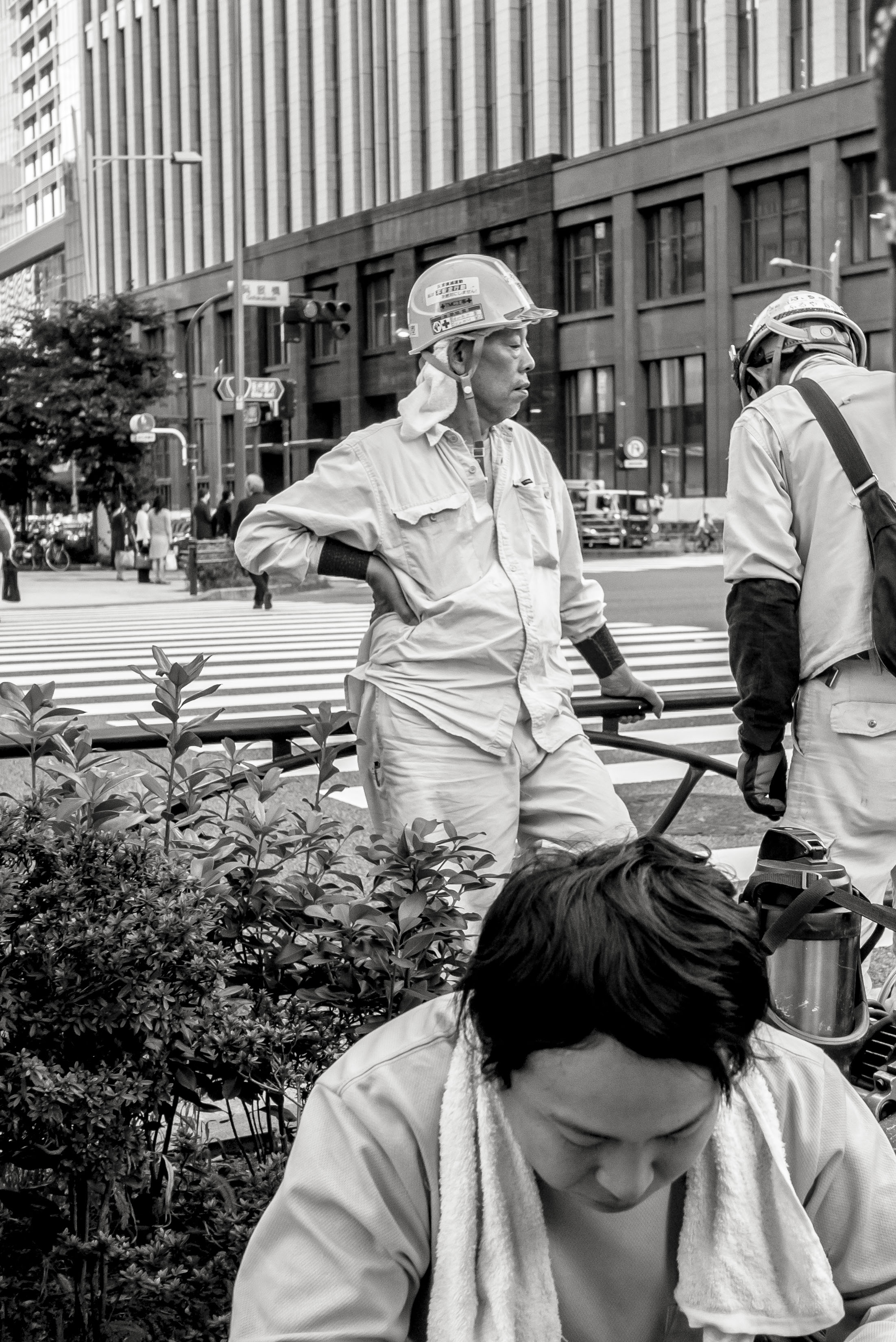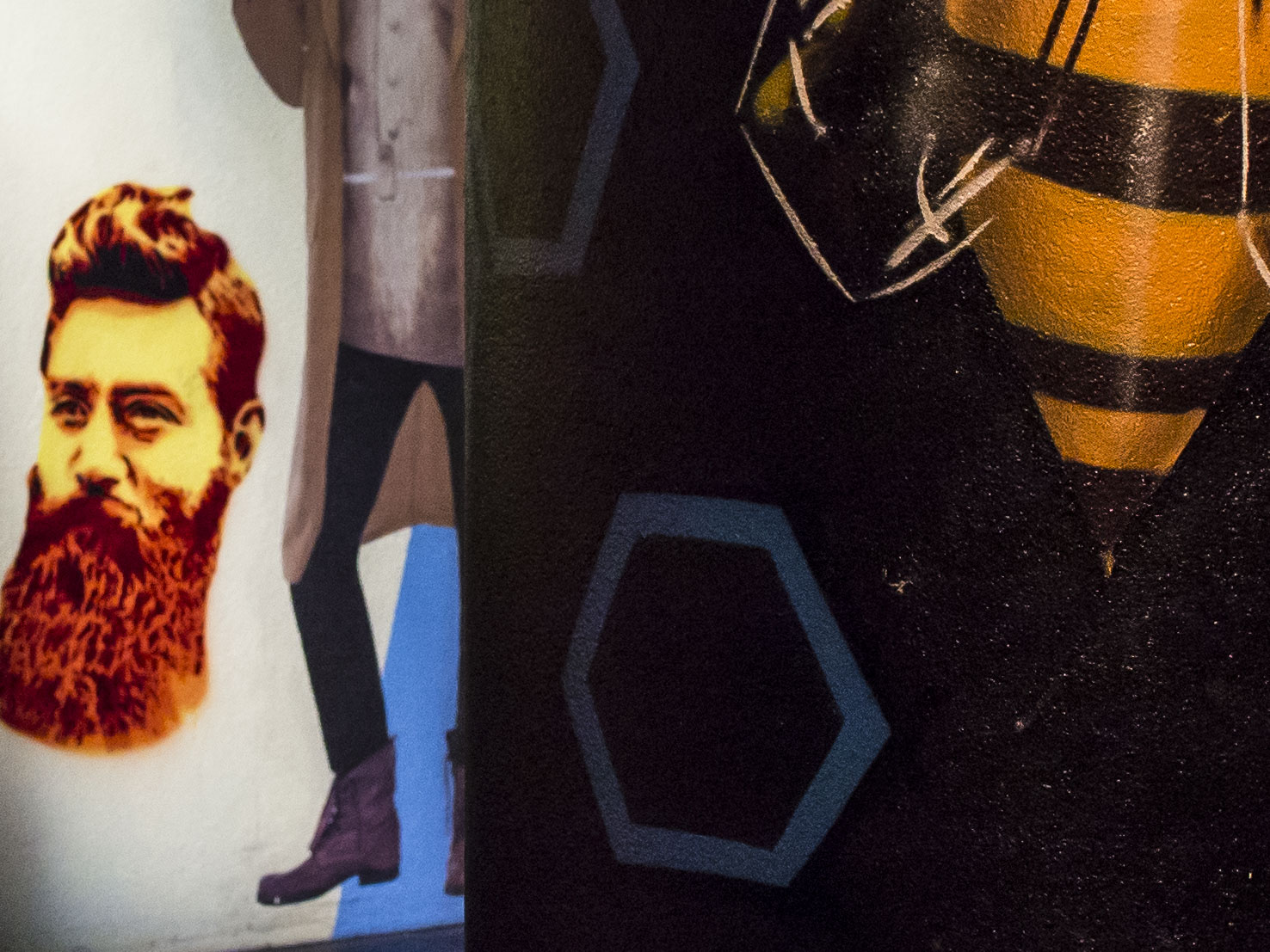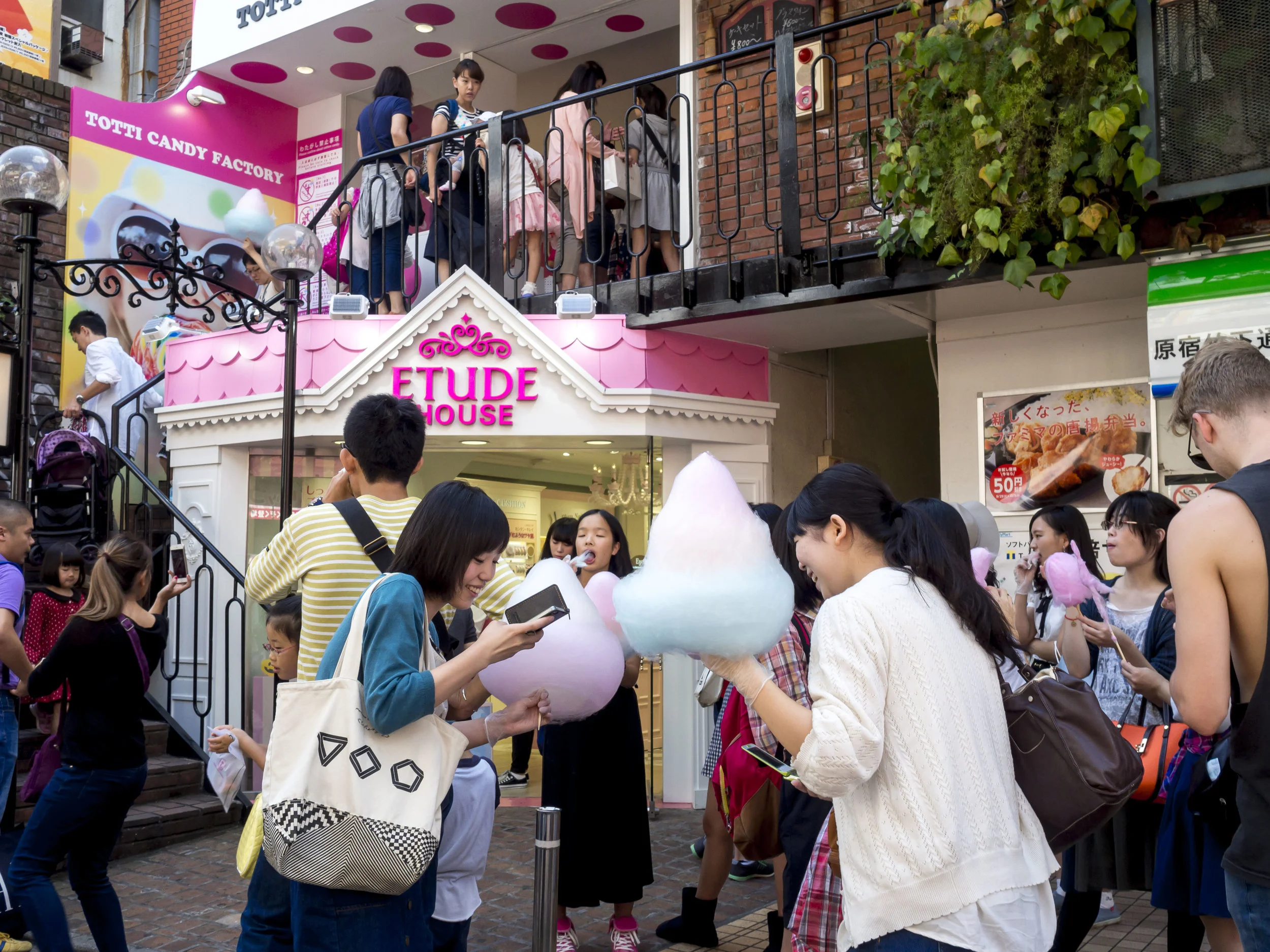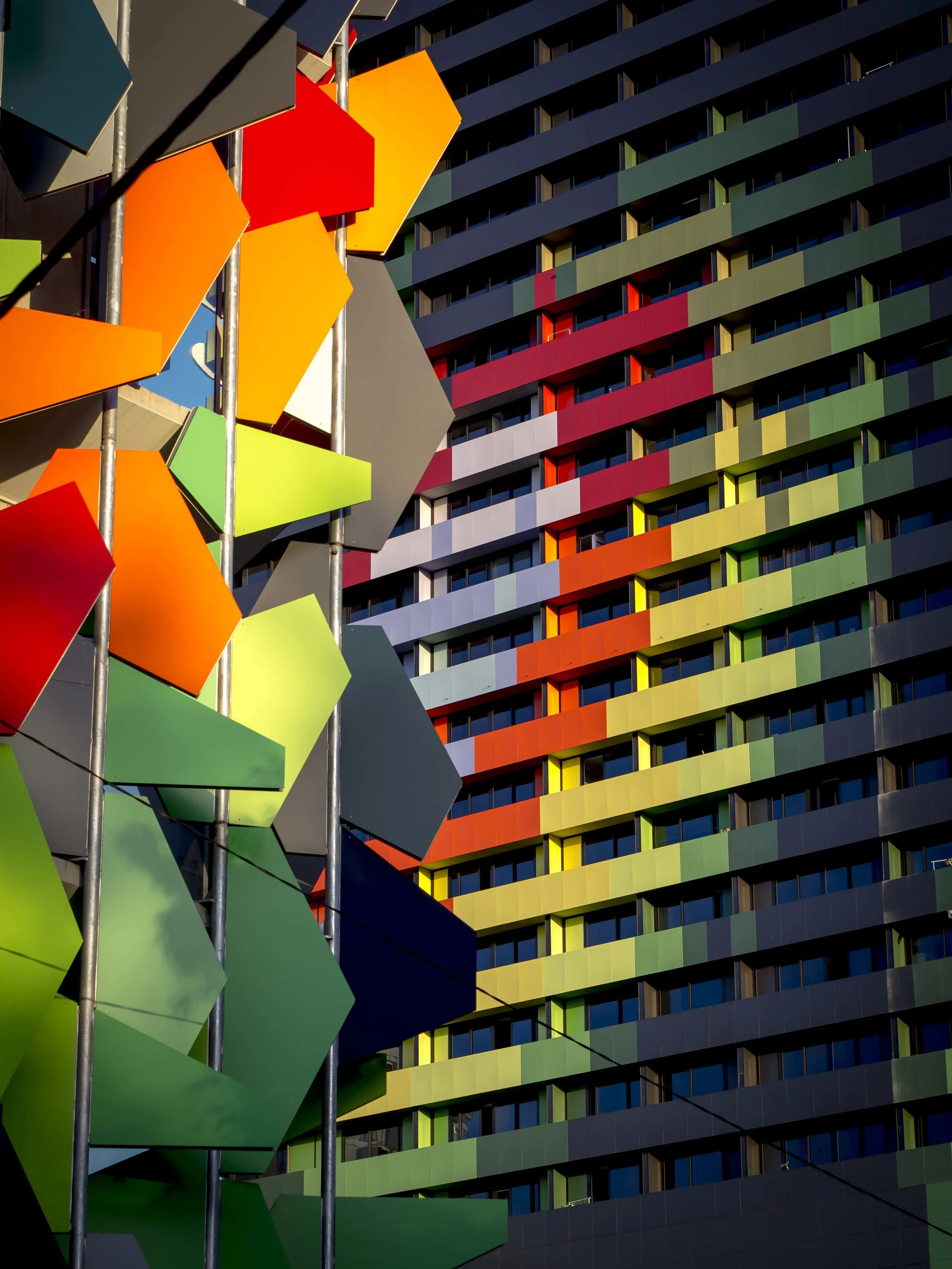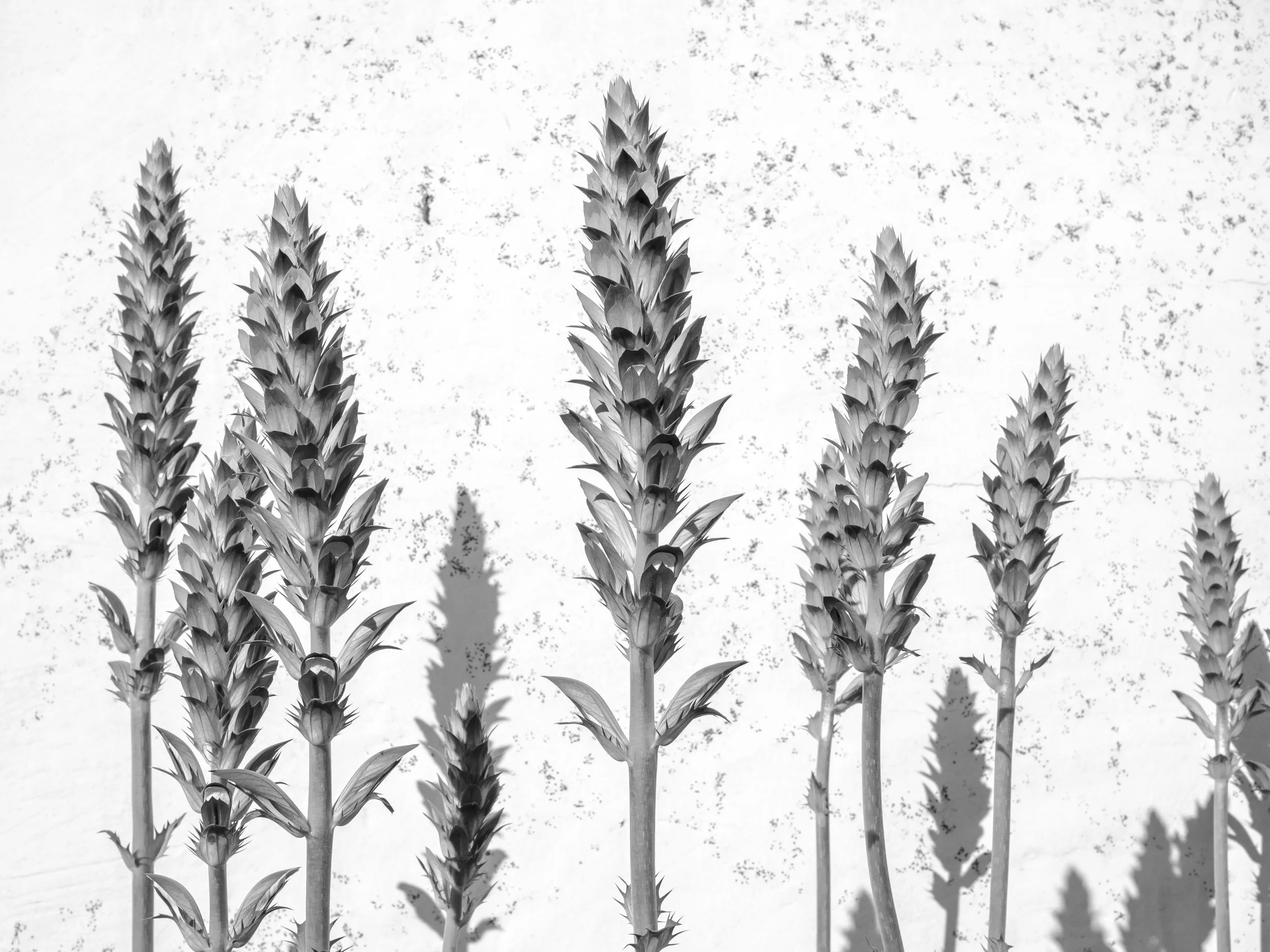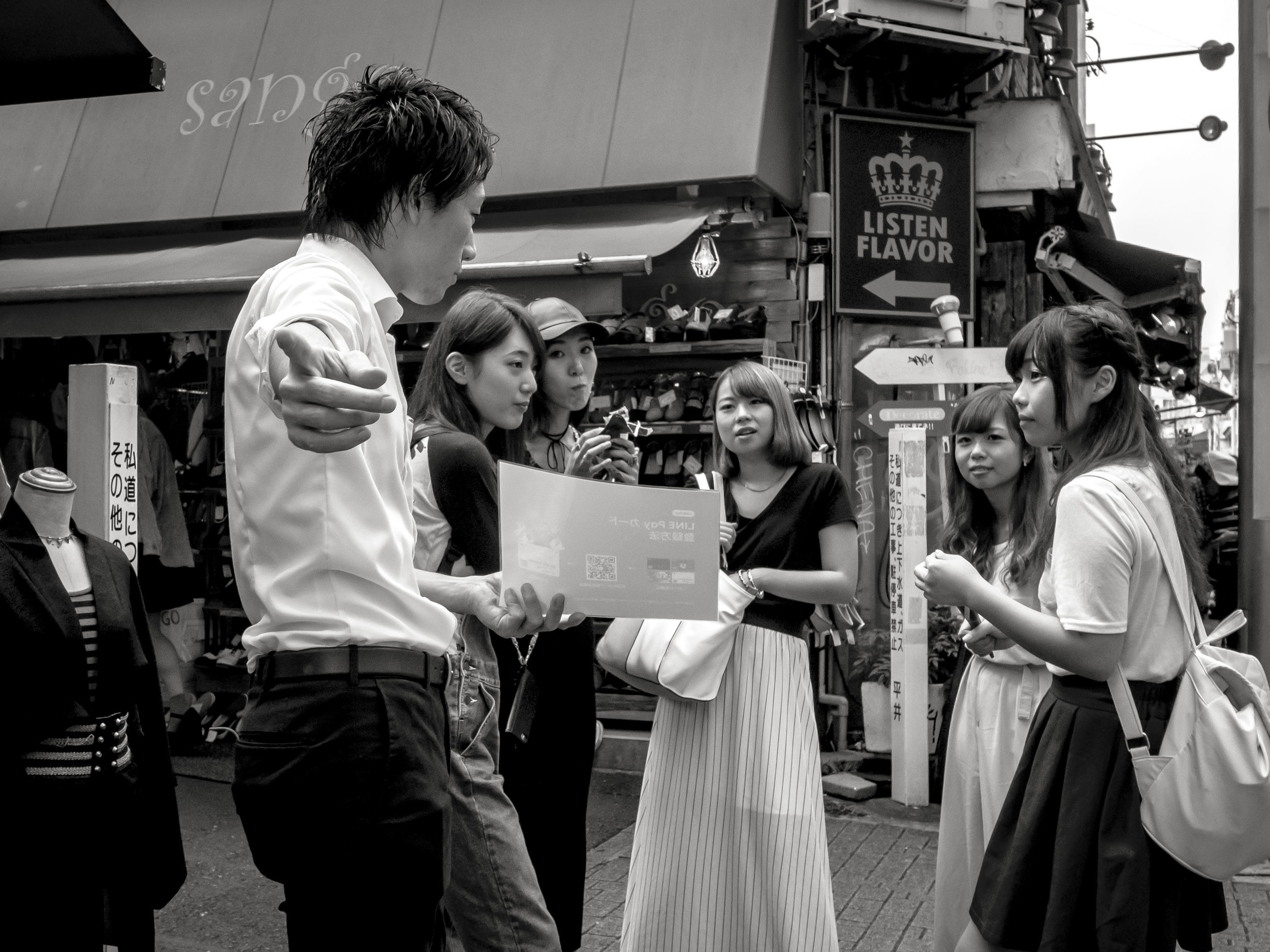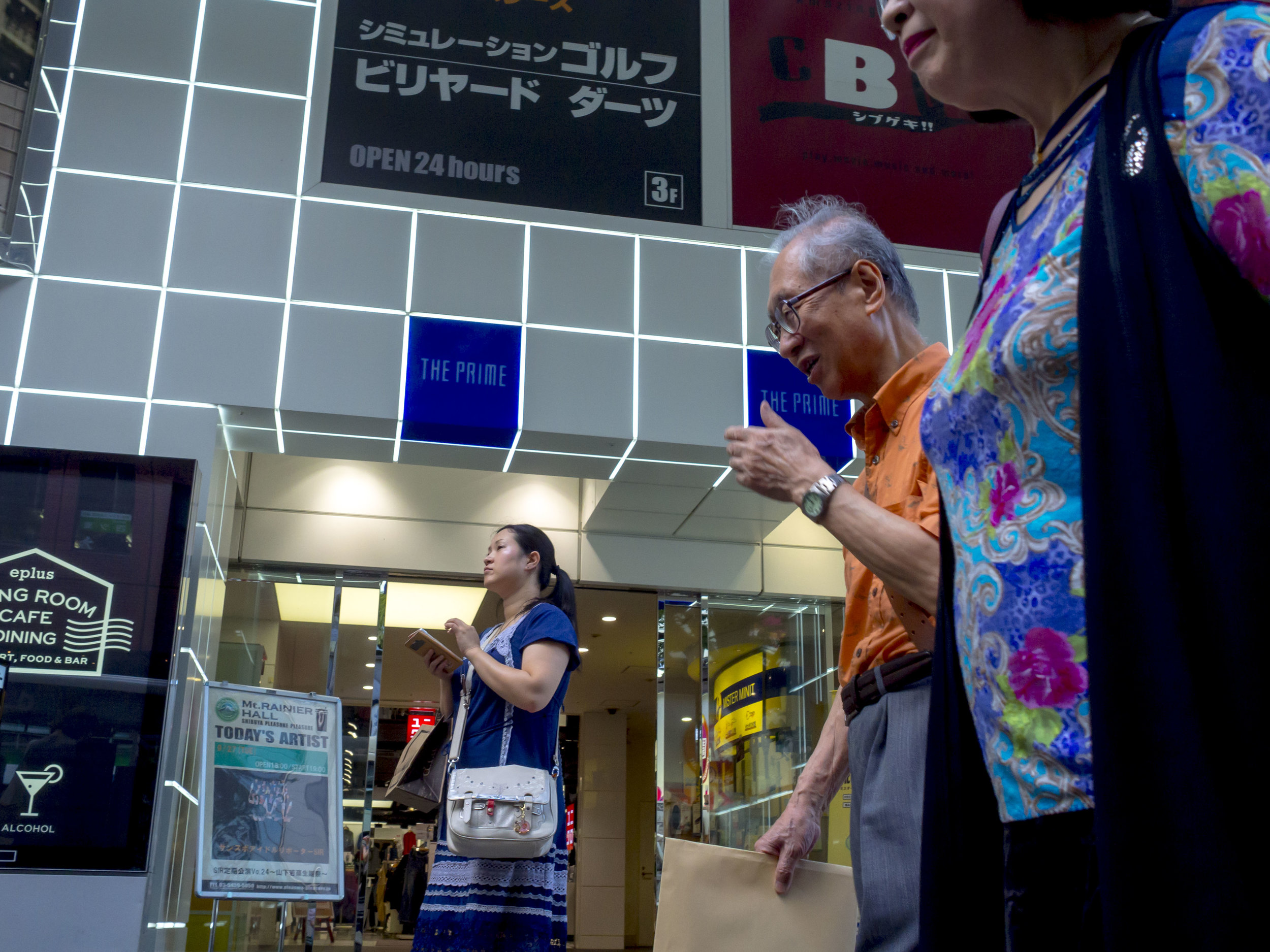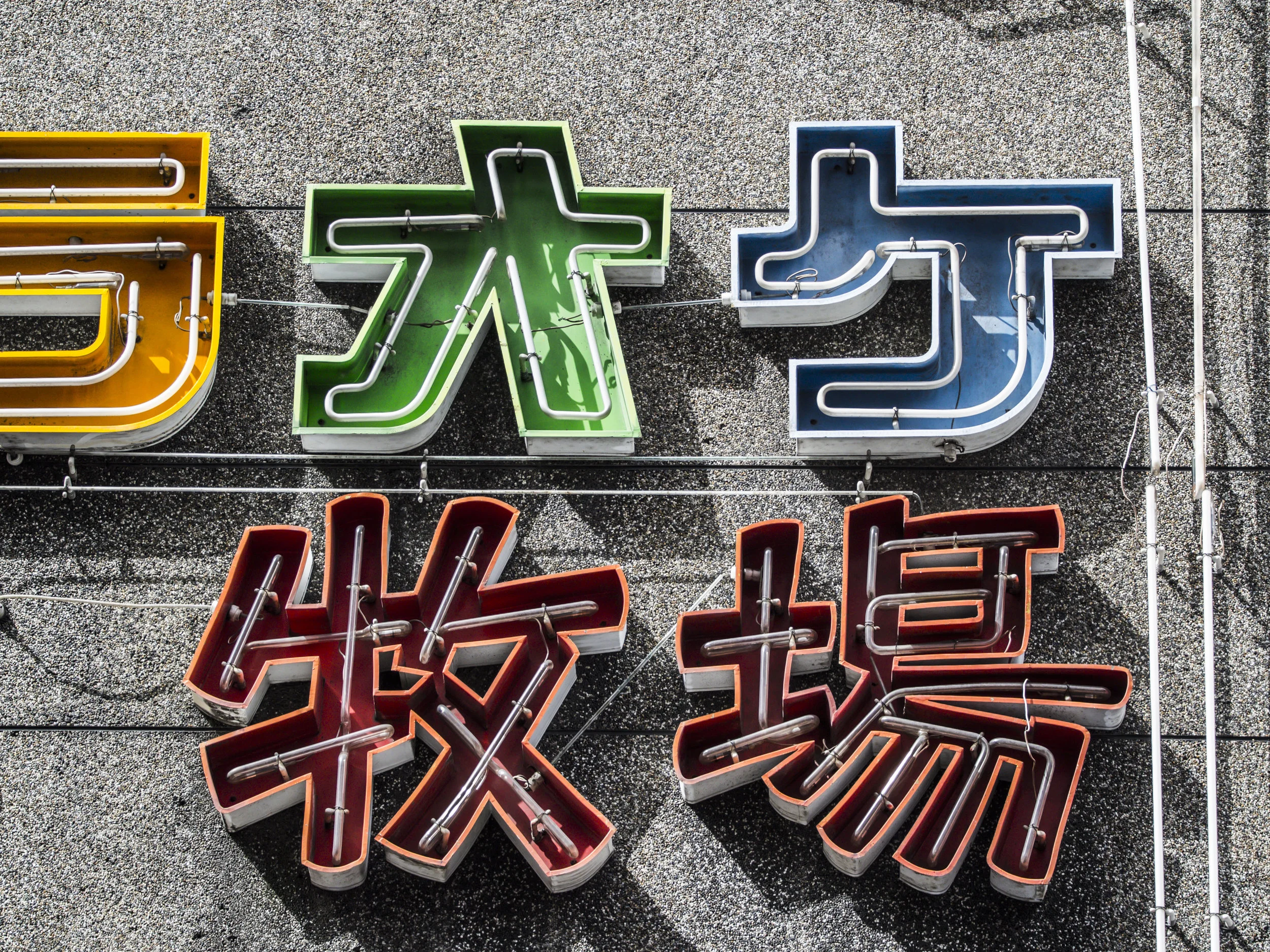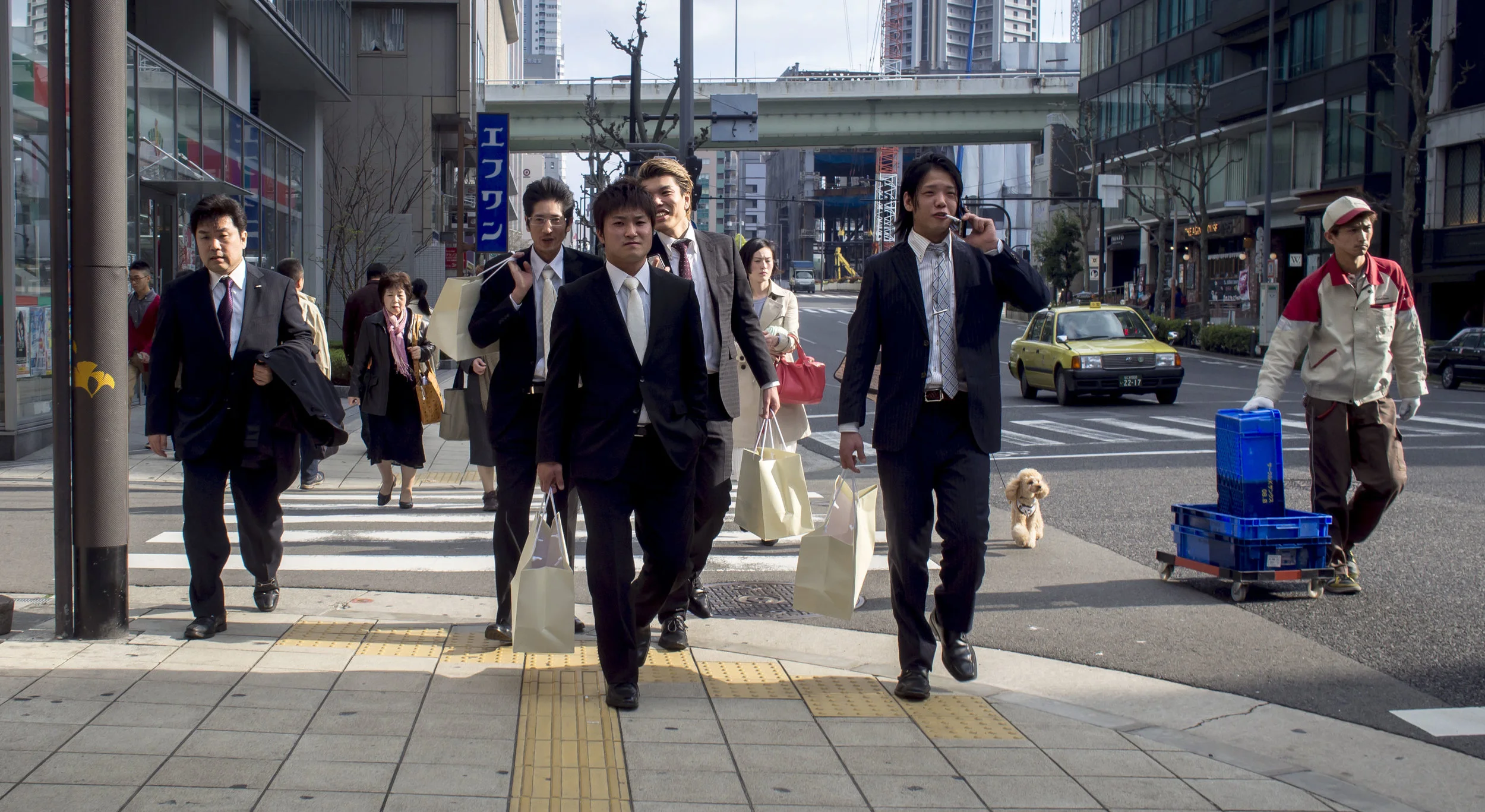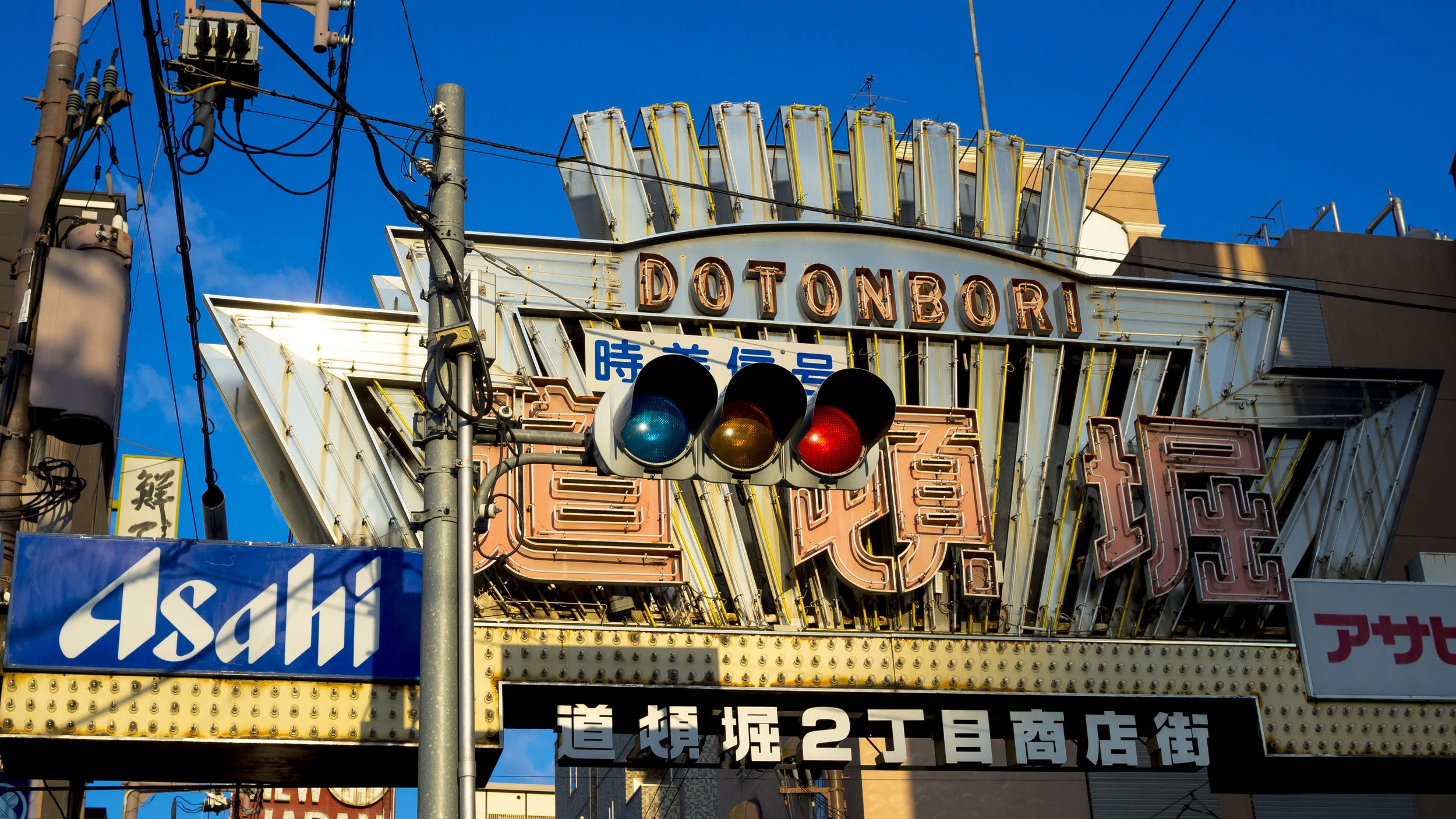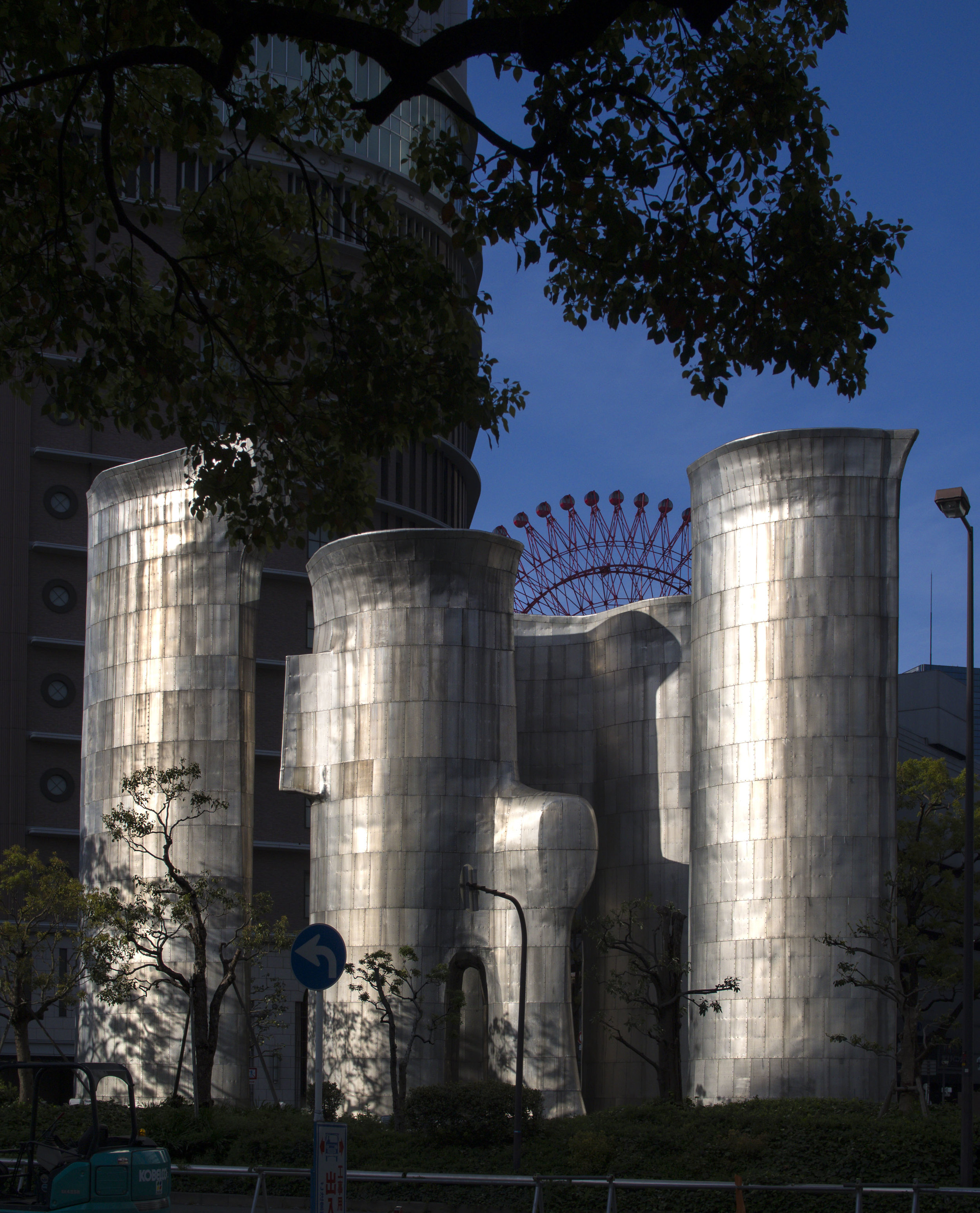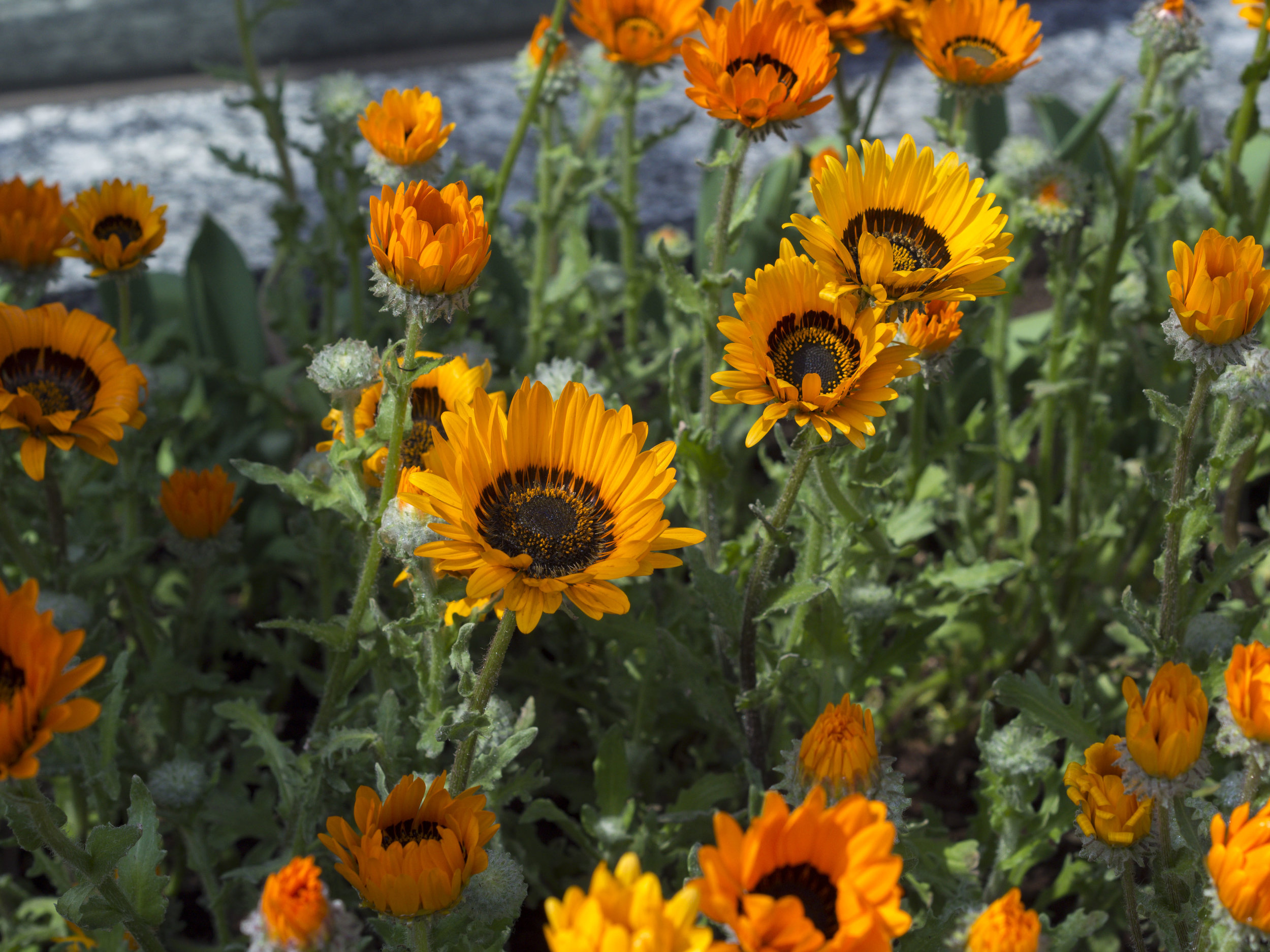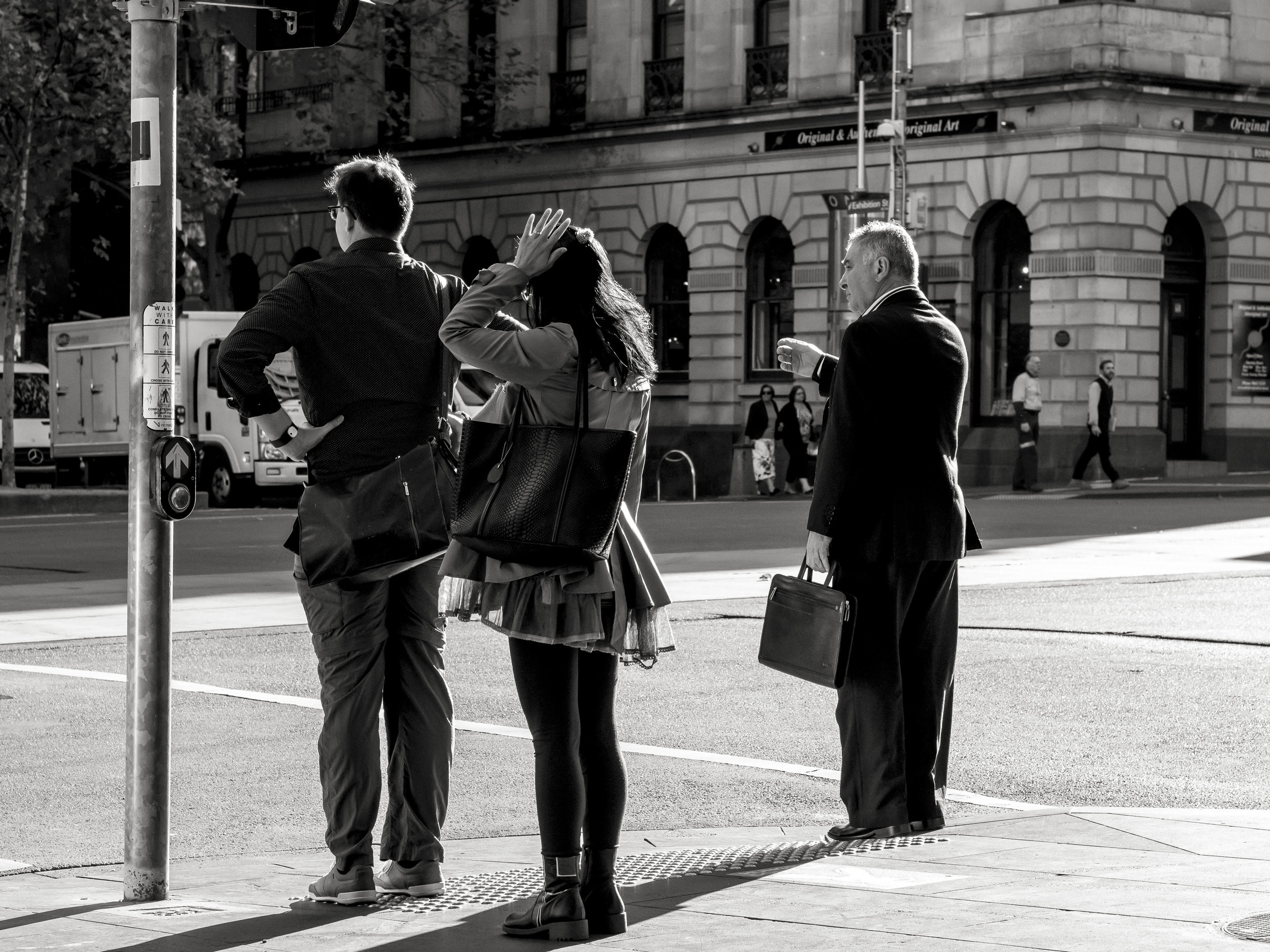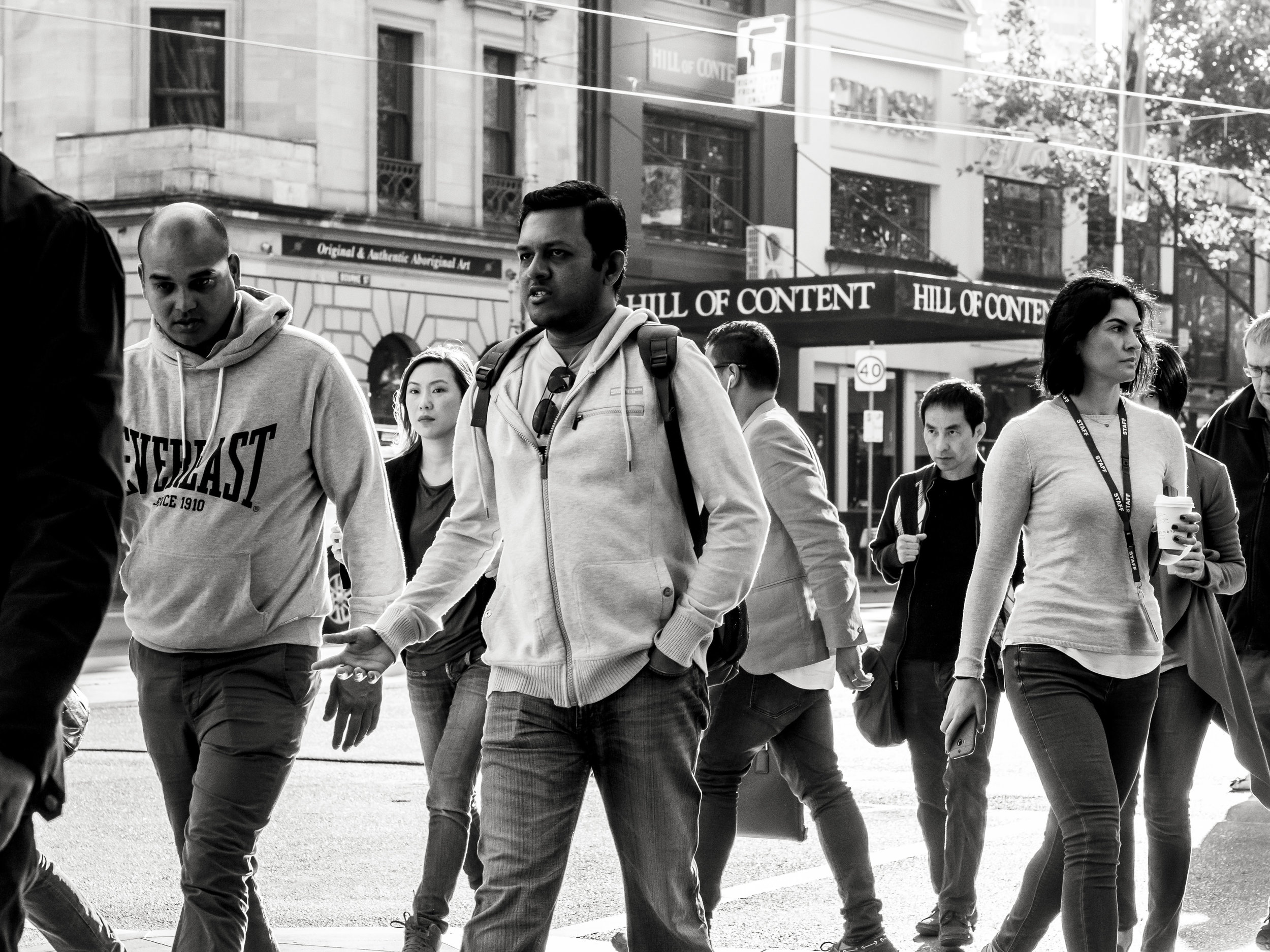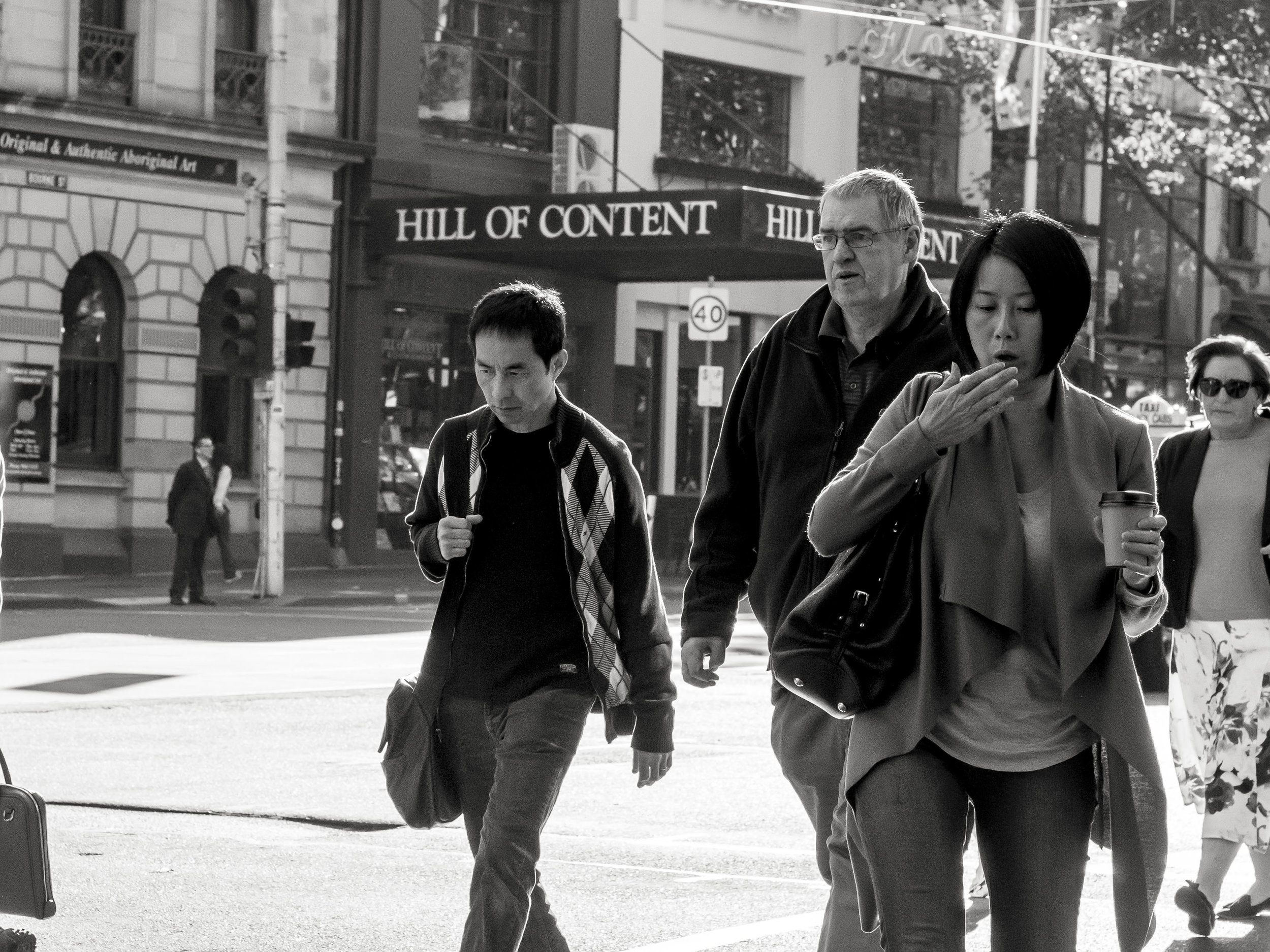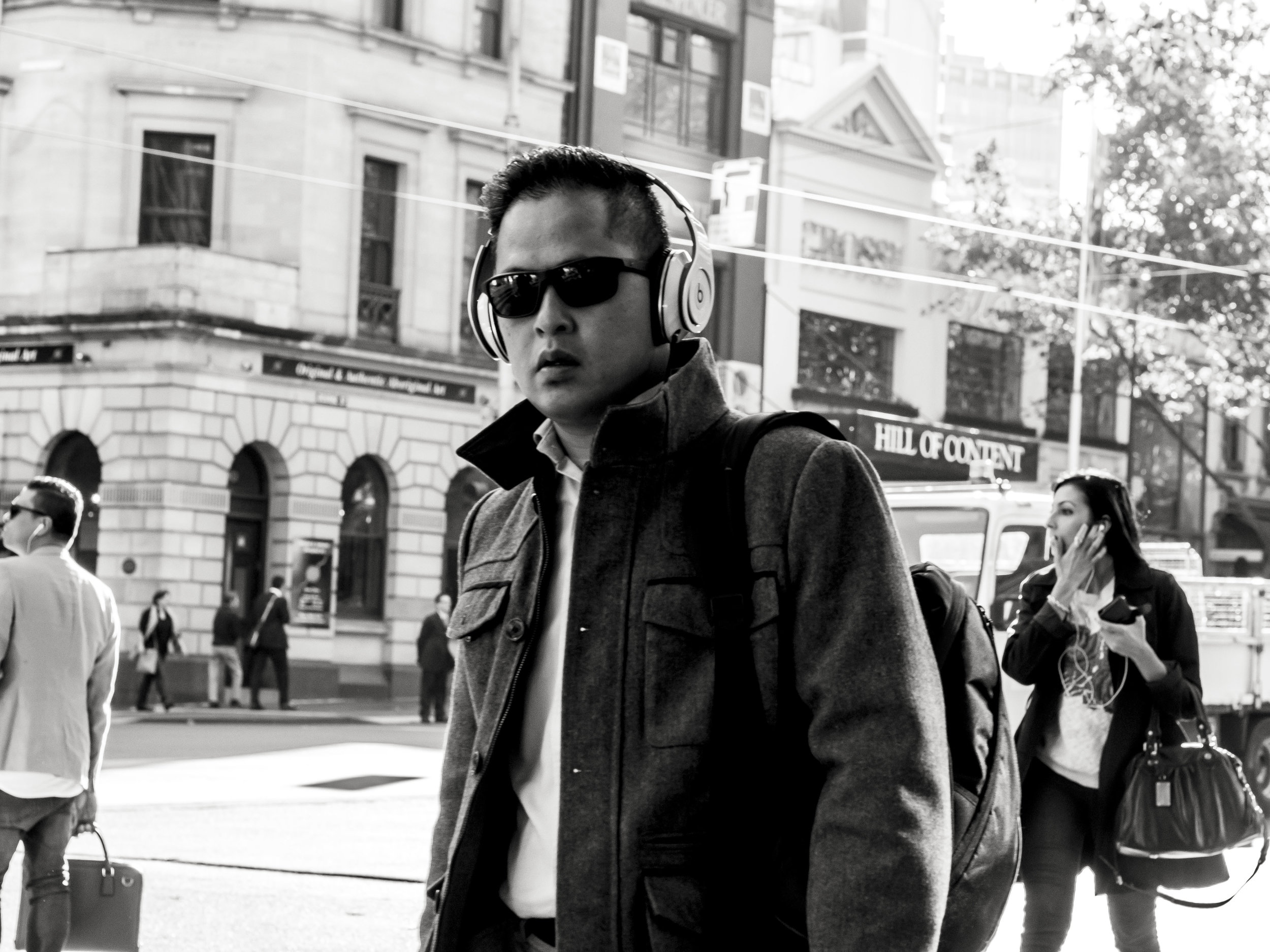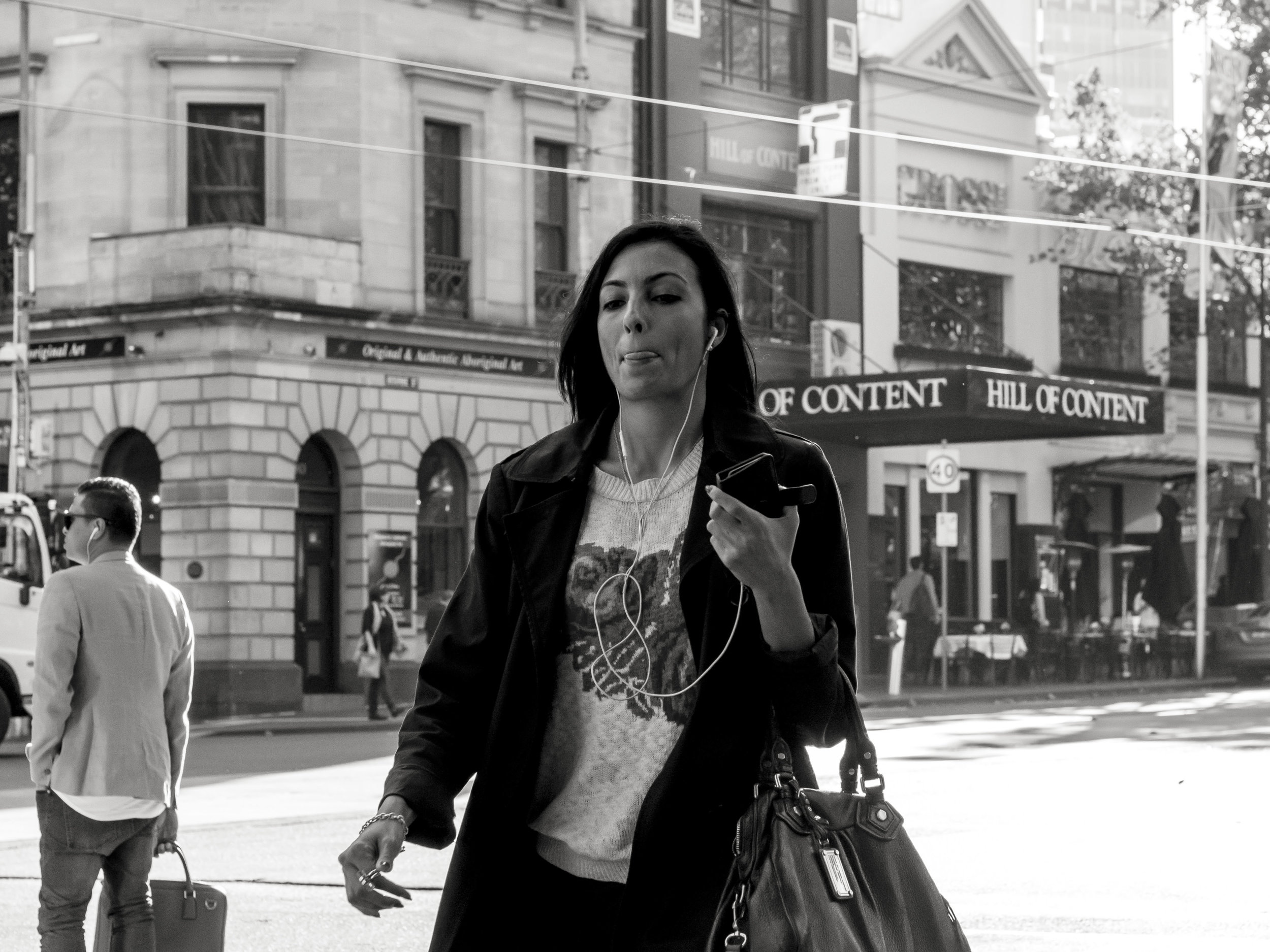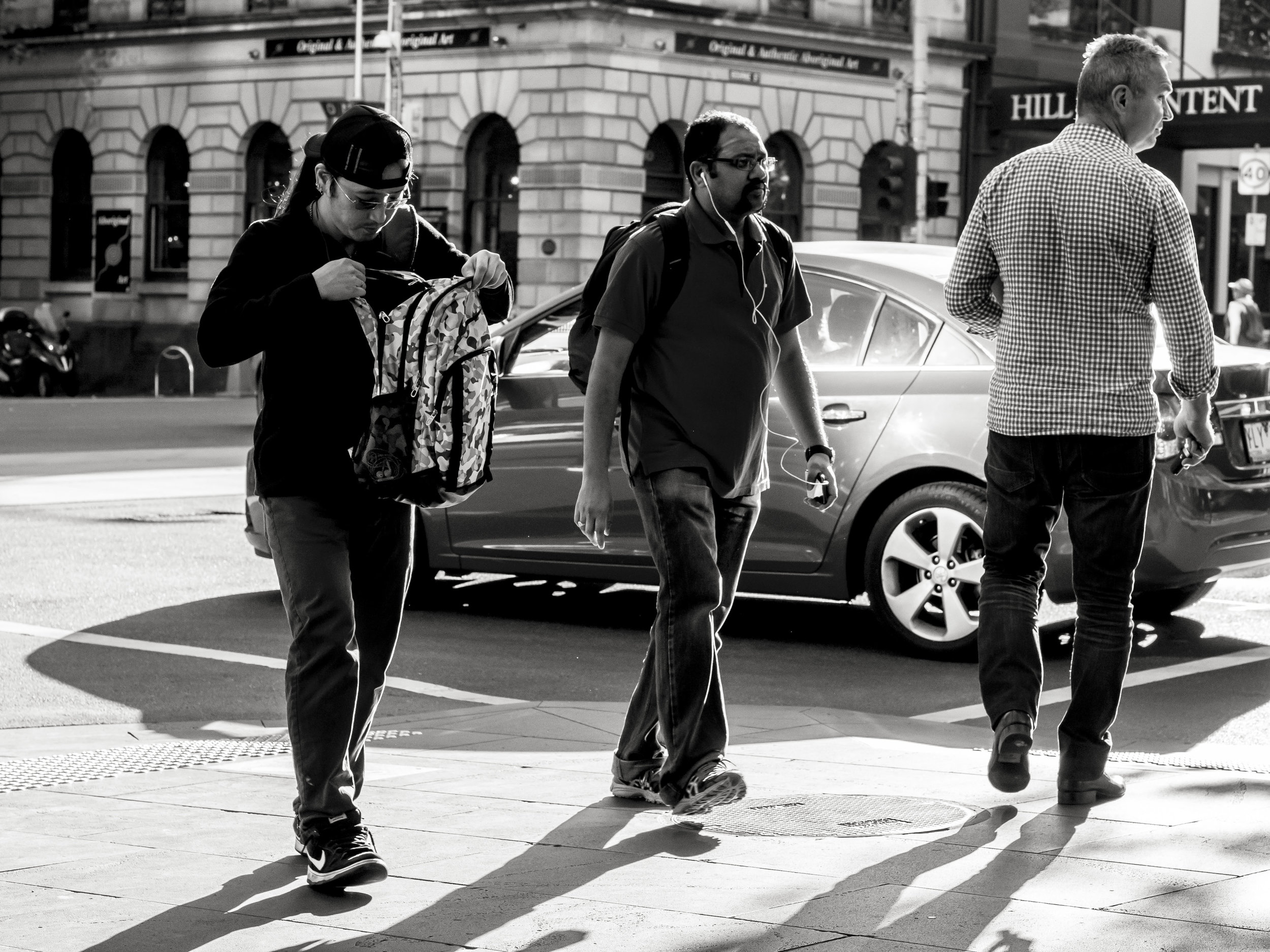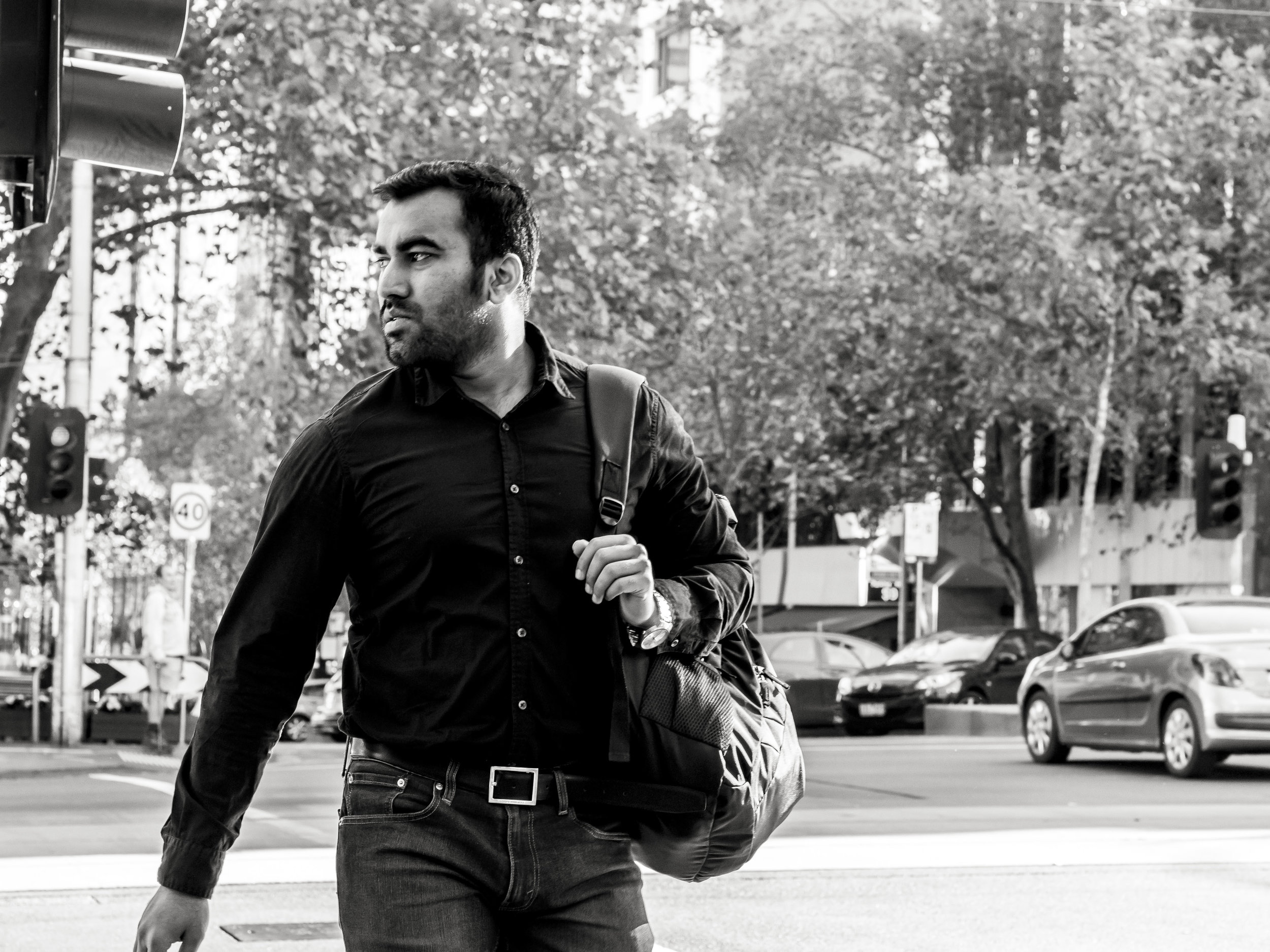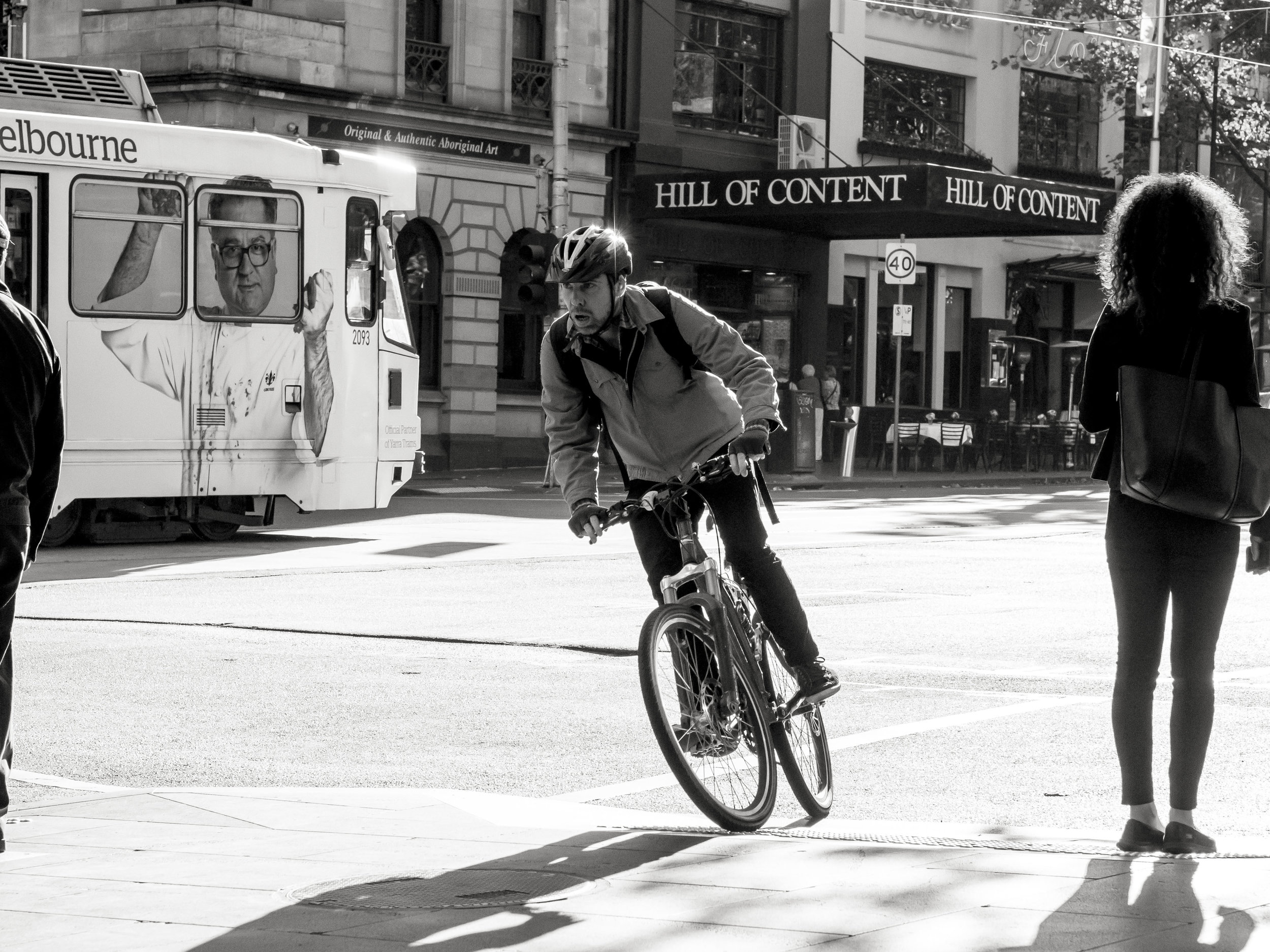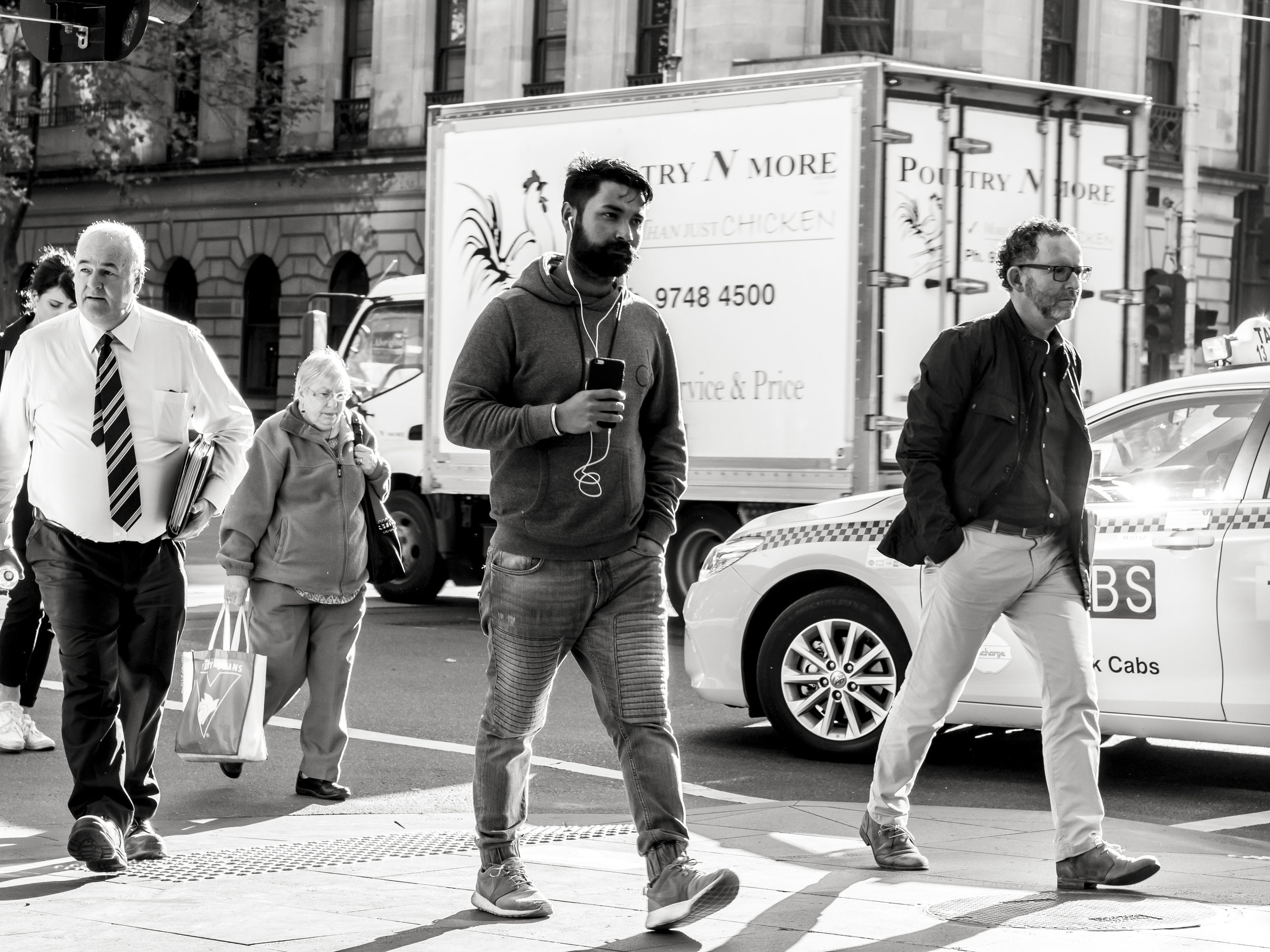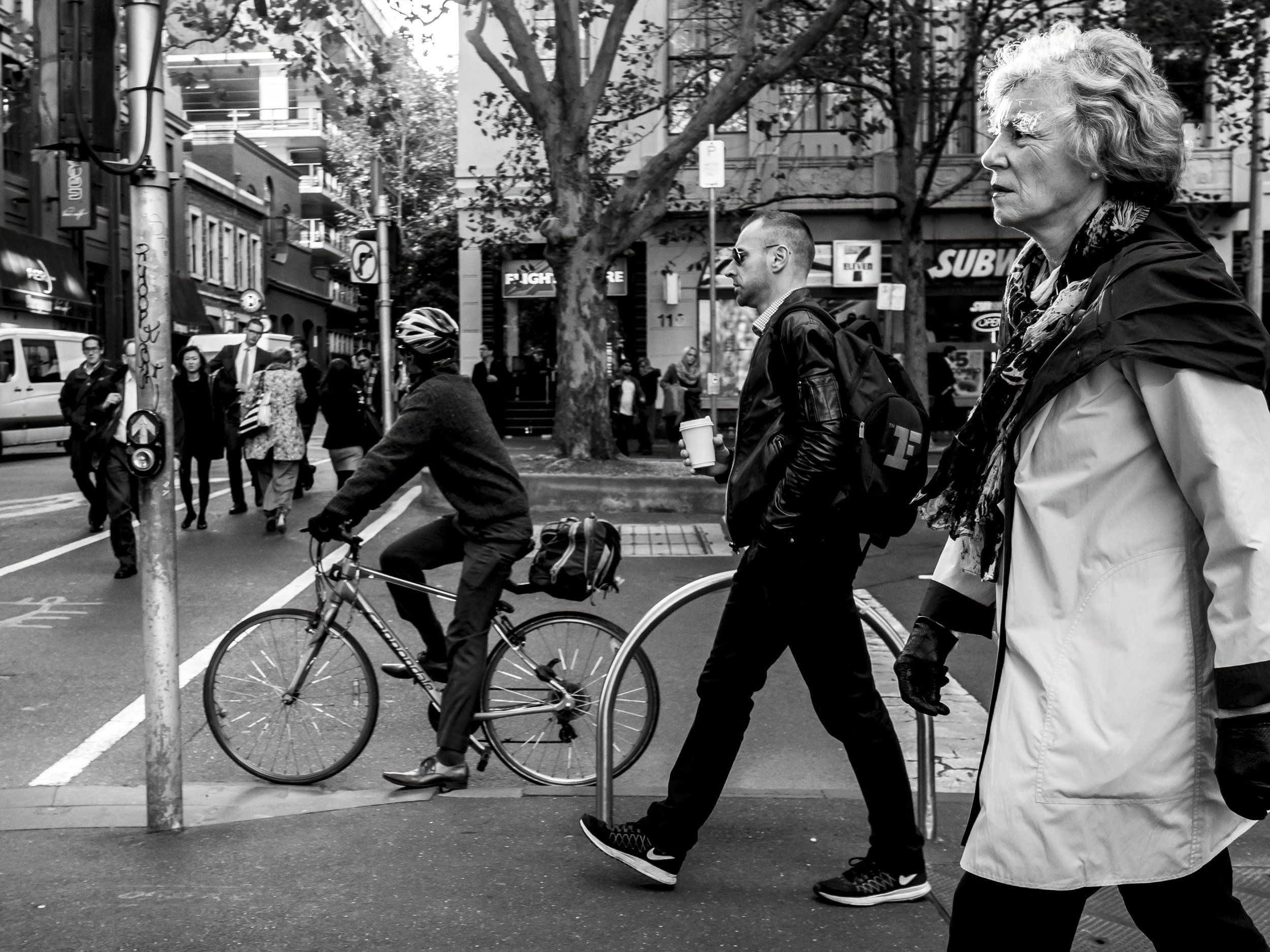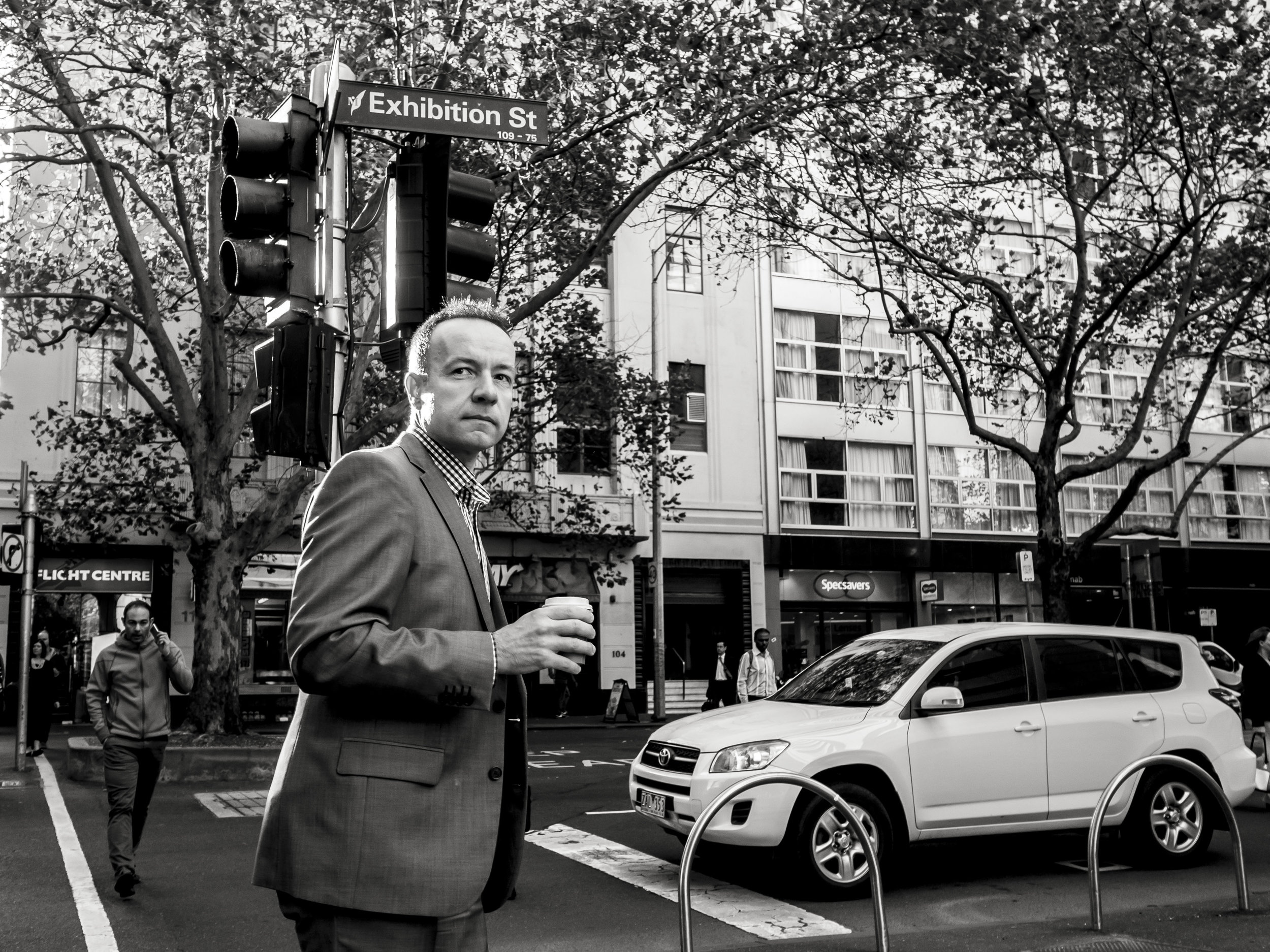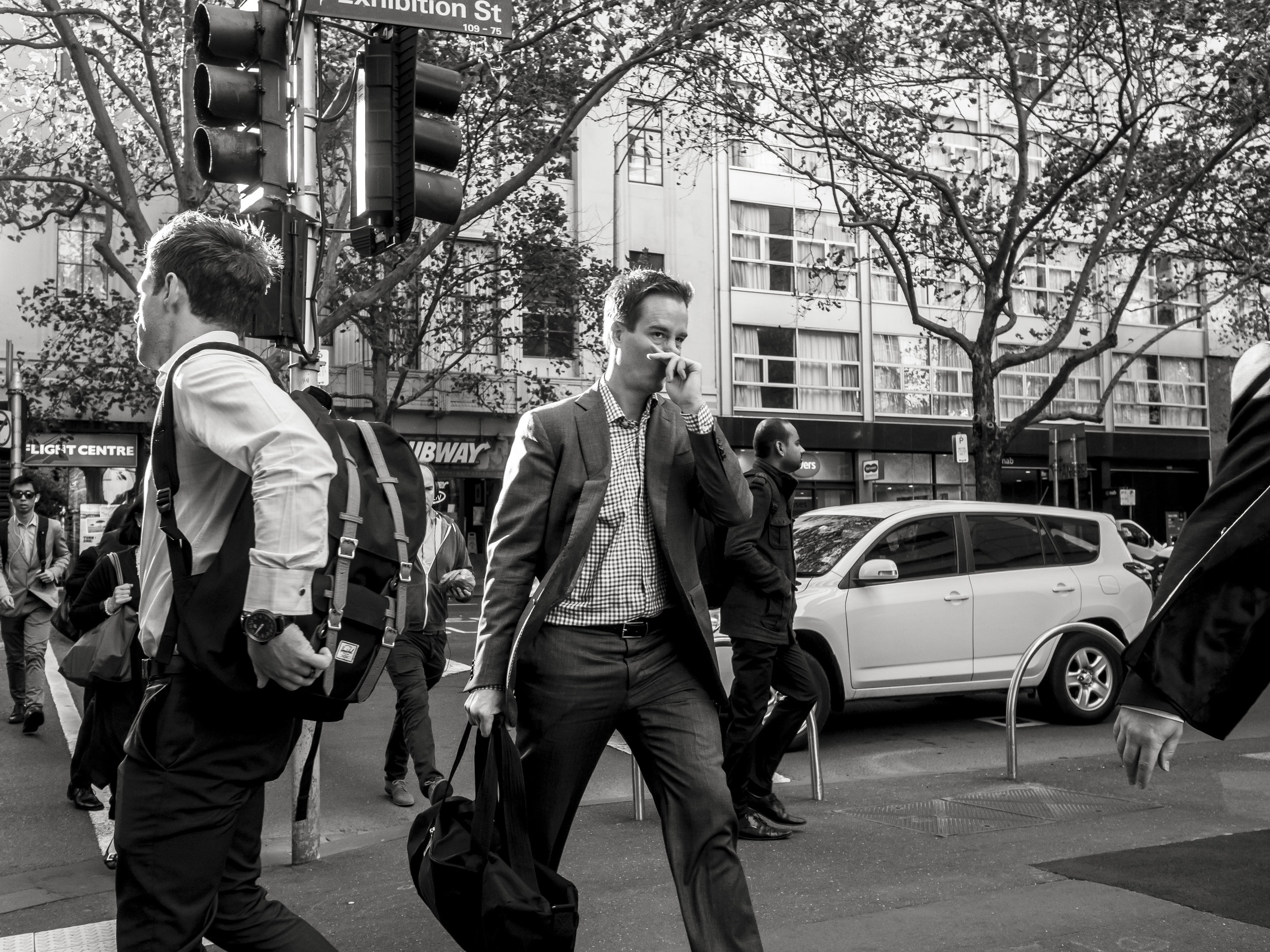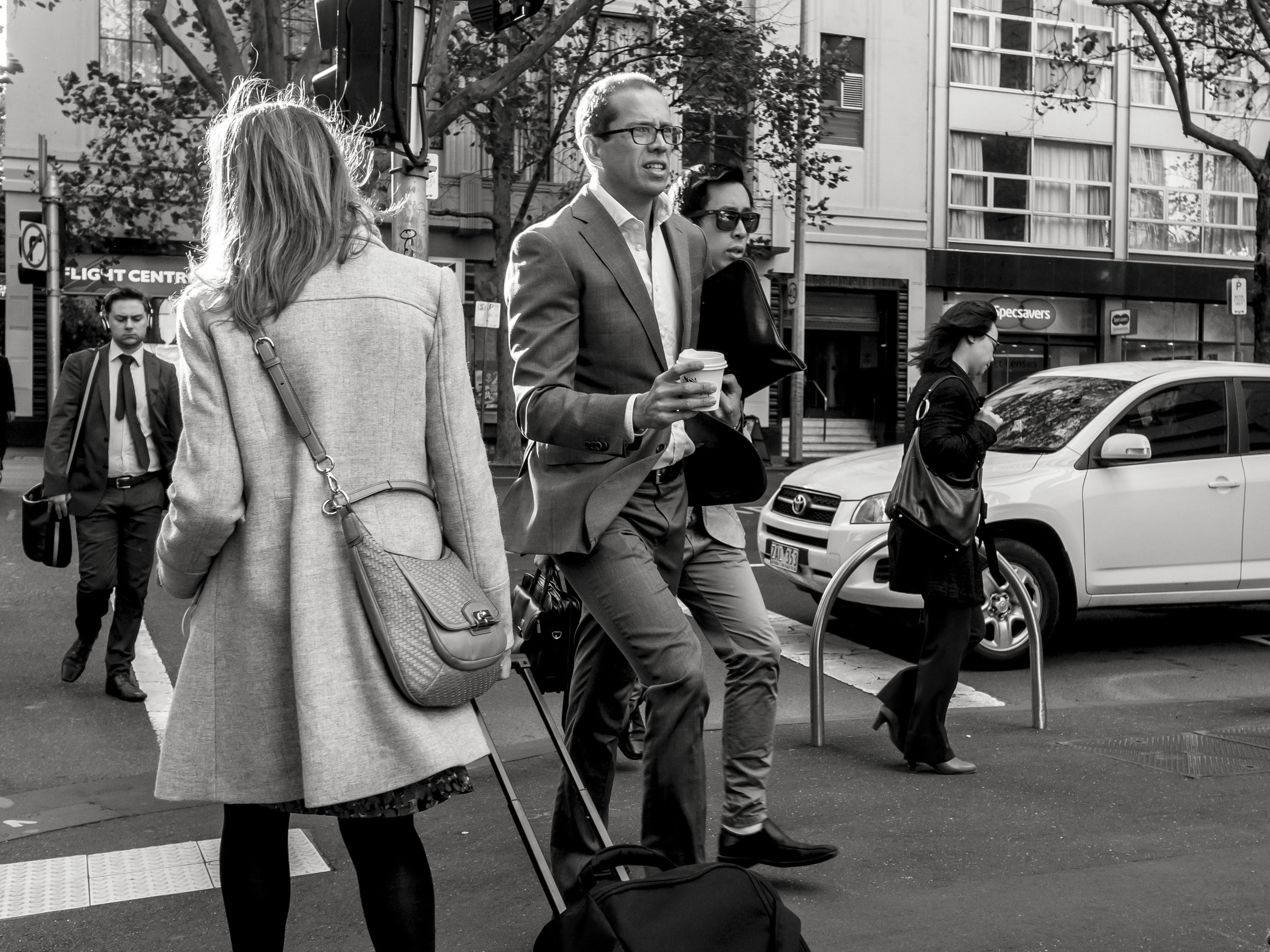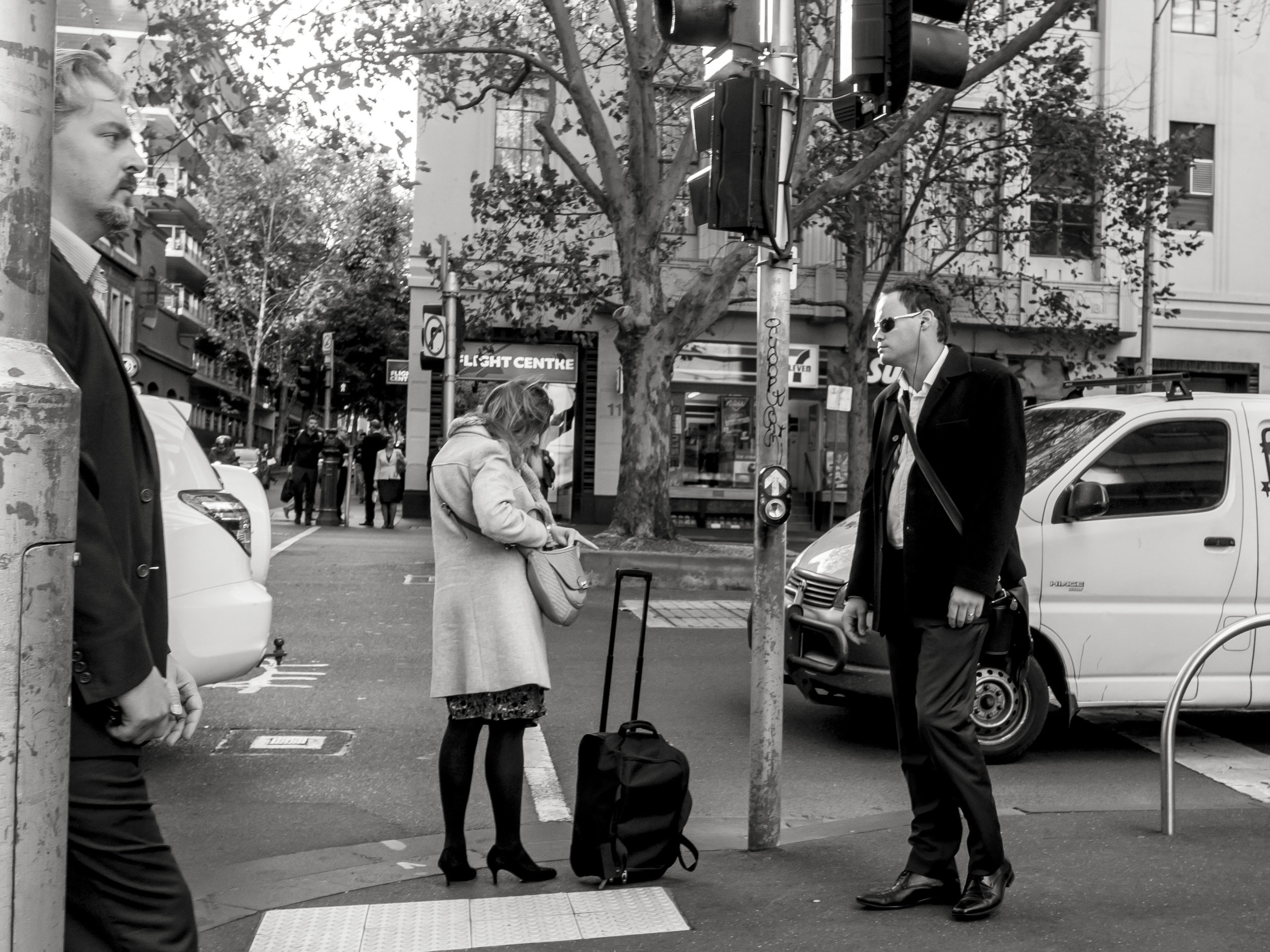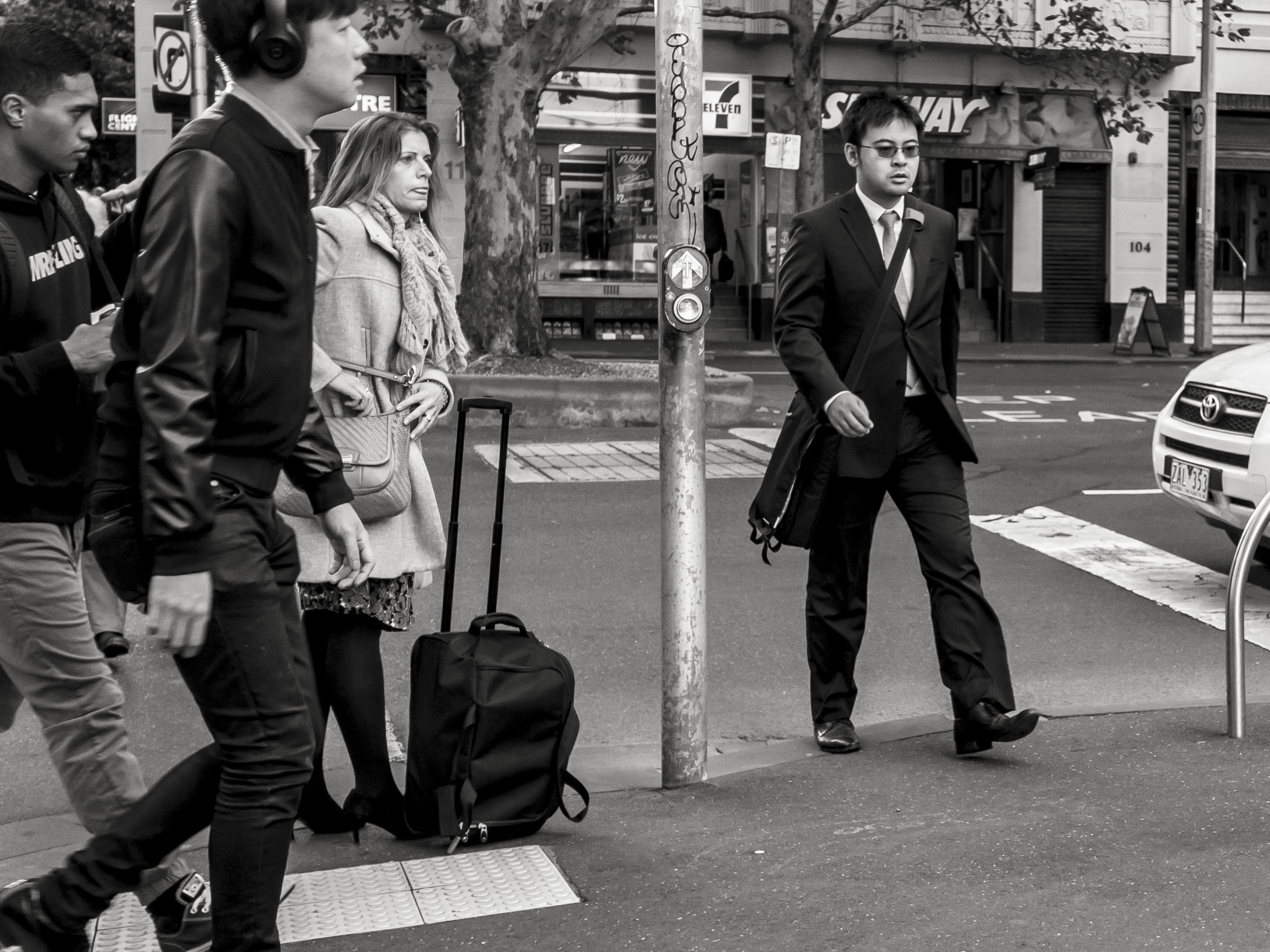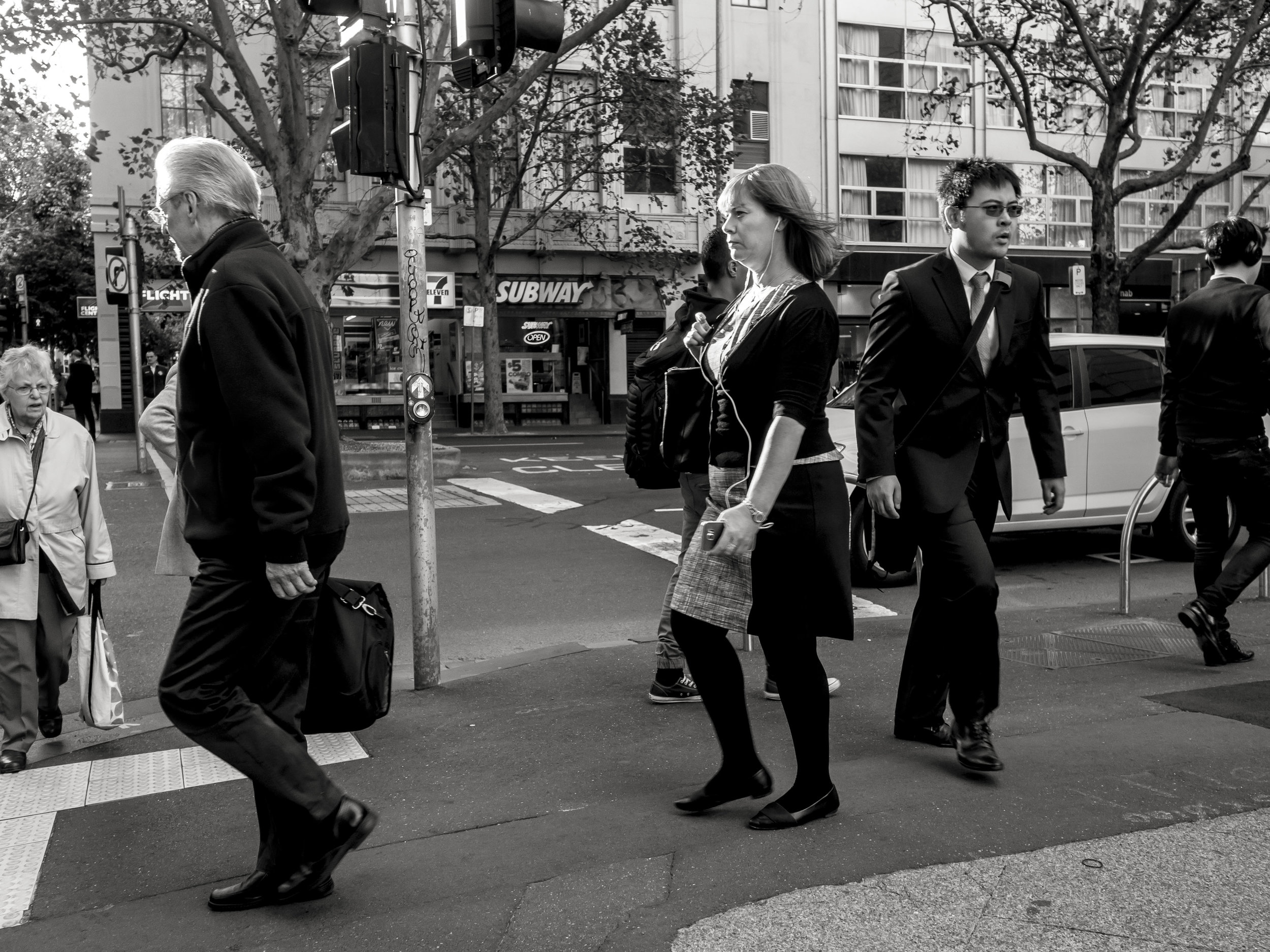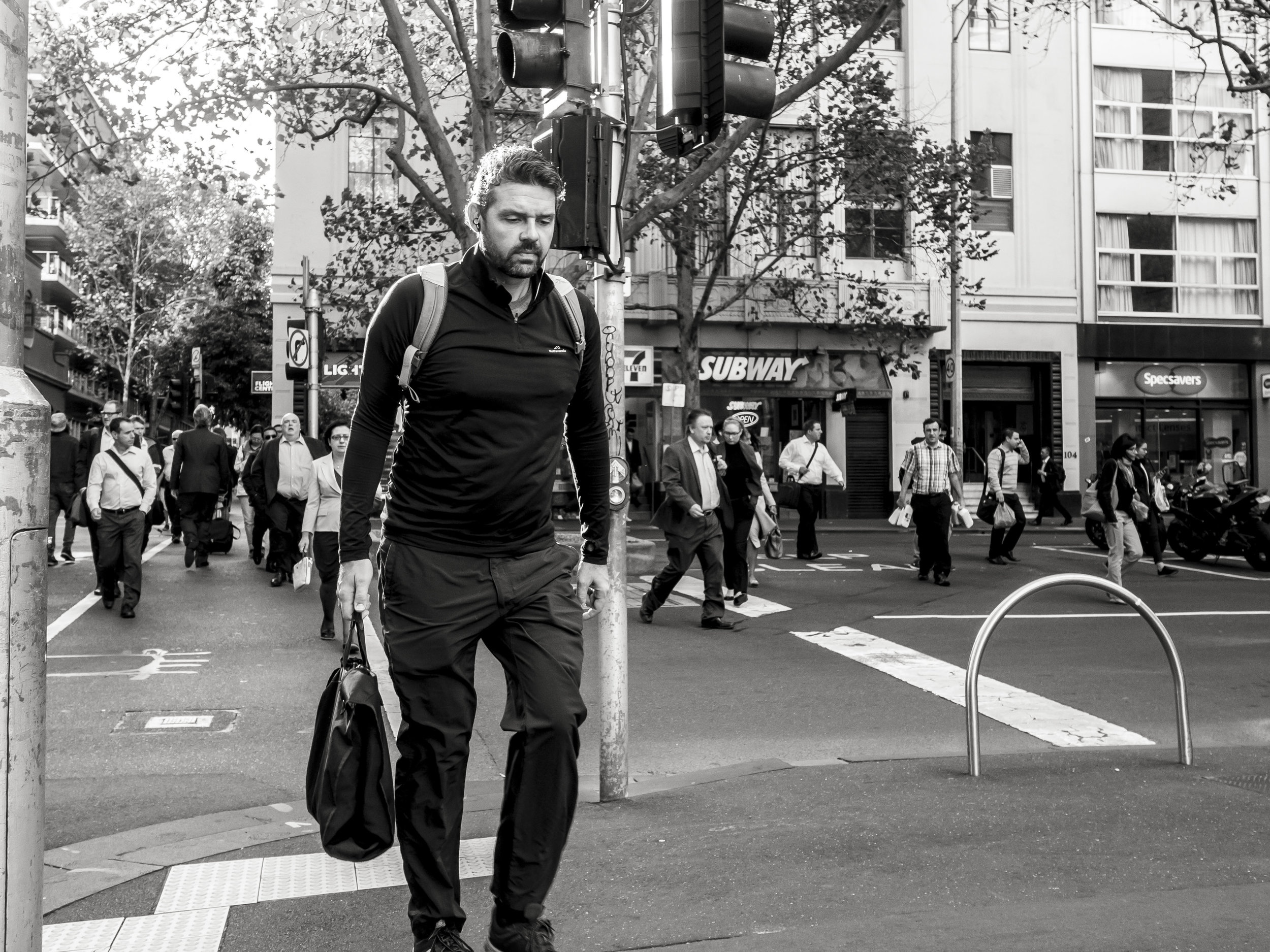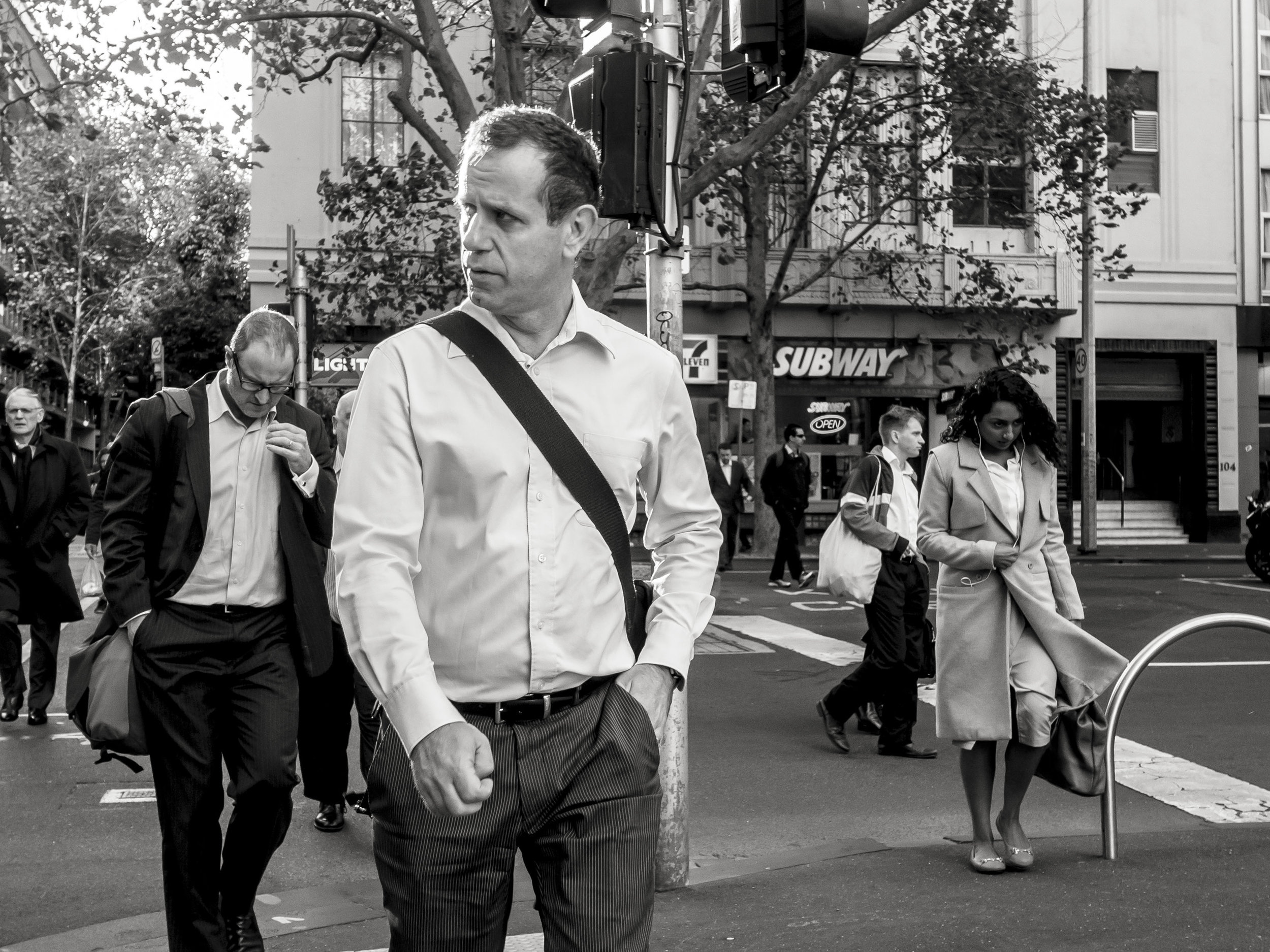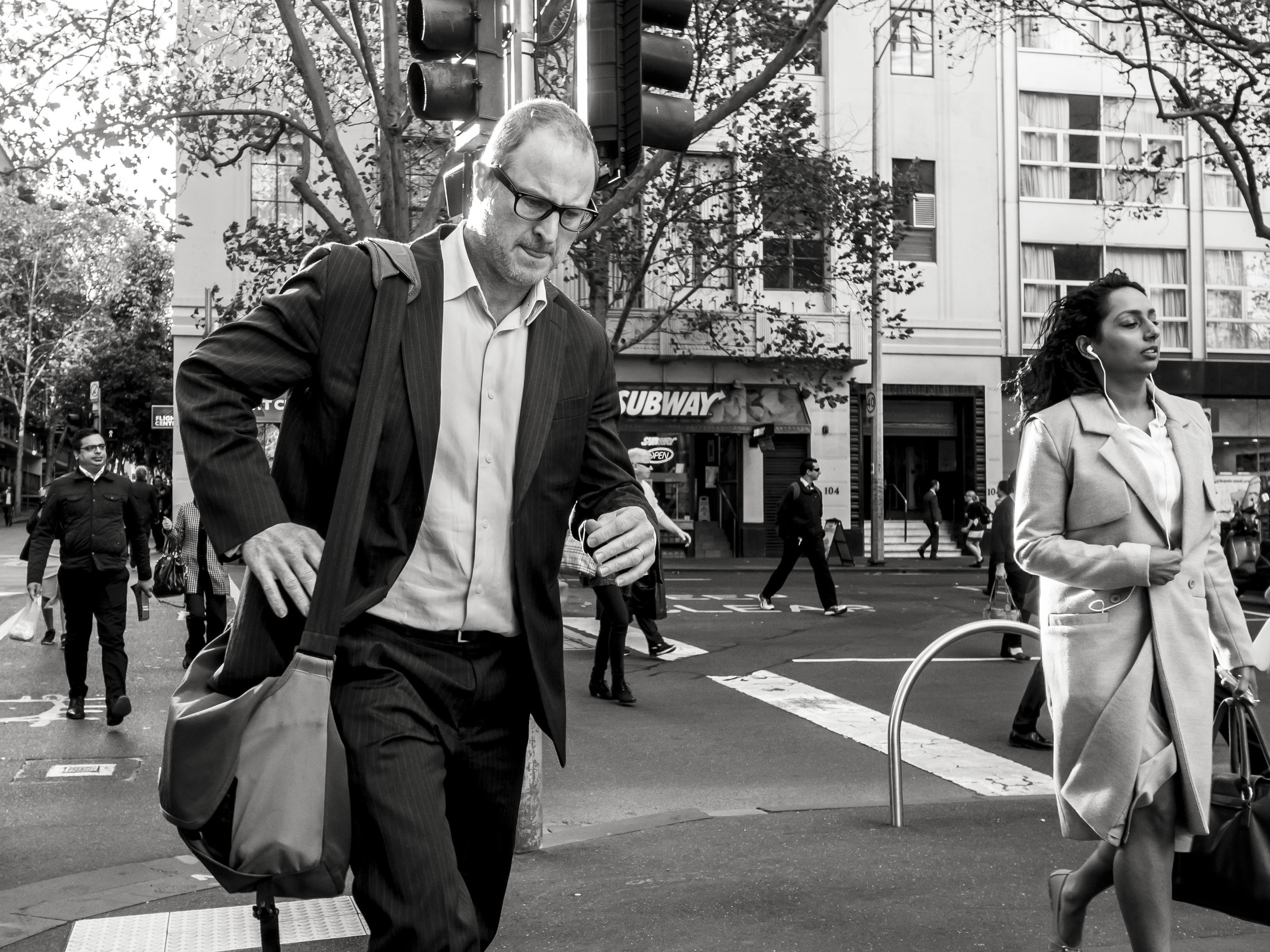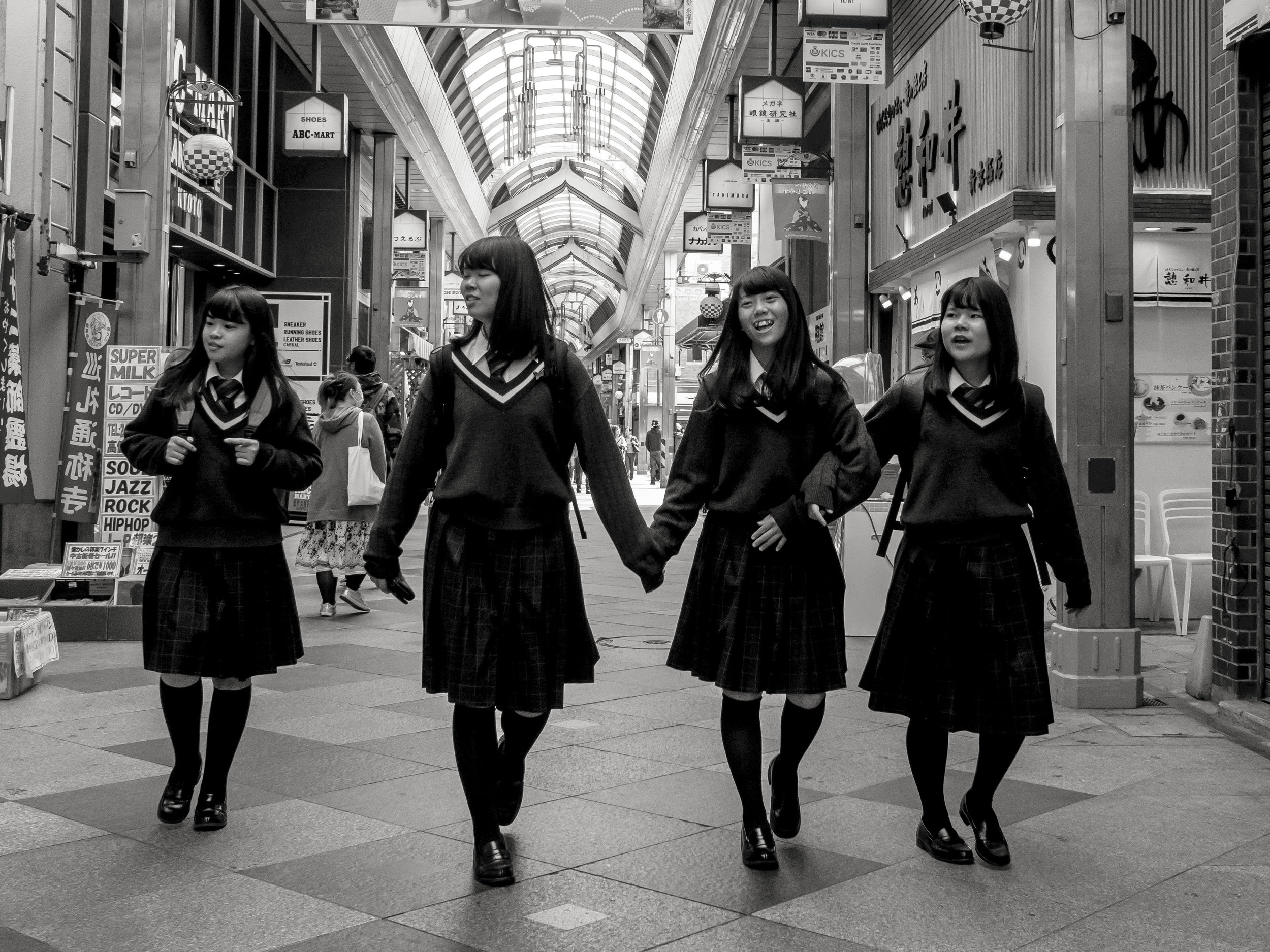Still on that 25mm (50mm equiv) lens and it's role as the new 20mm.
I think the real issue for me is that even though the 20mm is considered the "true" standard lens both mathematically and visually, it does commit to a look. The lens is too wide for normal portraits, but wide enough for environmental portraits. That is to say, if you get too close there is some "fish bowl" effect to faces, that stepping back a bit fixes, while including some context.
Often considered a boring lens, I think it is simply the first wide angle lens.
The 50mm lens perspective on the other hand is too tight for environmental portraits that share a feeling of intimacy with the viewer. As a compression style, true portrait lens it is also weak. This is possibly why I have found the lens hard to use. I either want a street scene in all it's chaotic glory or I am closing in tight on one subject. The 50mm perspective does neither well. If pushed, the 17mm and 75mm would be my last two lenses kept.
What is it good for?
I do not believe it is a true all rounder. Telling a budding shooter to just use a 50mm to develop their eye will, I believe, lean them towards portraiture over environmental images. It will however clarify their vision and force a good understanding of depth of field, so good for technical training. The 50mm may also be a good lens to force a decision, being not enough of either. I reckon pretty quickly, the fresh minded learner will start to shift one way or the other. One of the most comfortable lenses I have ever used was a Canon 28 f1.8 on a crop frame camera. The 45mm focal length just felt perfect.
Imagine how different the first images from a new photographer may be if they started out with a 35mm lens only? They may show an aversion to tight cropping of faces due to distortion, will learn to include more width and depth as the lens will reward these, not fight them. The 35mm trained photographer will be the stage manager, where the 50mm photographer stresses the main subject or "hero" of the image. The 50mm may well become their portrait lens in contrast to what they see as normal.
A lot of the classic street shooters* used 40mm lenses, or later the 35mm as it was the nearest available, as the 50mm perspective was too focussed in on a single thing over the interplay of multiple subjects. It is fine to say, "just step back a bit", but that looses intimacy, often opportunity and changes depth perception. I find you tend to look further out to compensate for the extra magnification, often composing in your head images that cannot happen due to obstructions or timing (this could be just a practice thing, but 17/45mm photography comes far more naturally) . The 17mm allows you to be "front rank" in a crowd, shoot from lower without unnatural distortion and allows a little room for error. The 45mm gives you a better "tight" lens, not requiring a short walk or heavy cropping to achieve composition.


